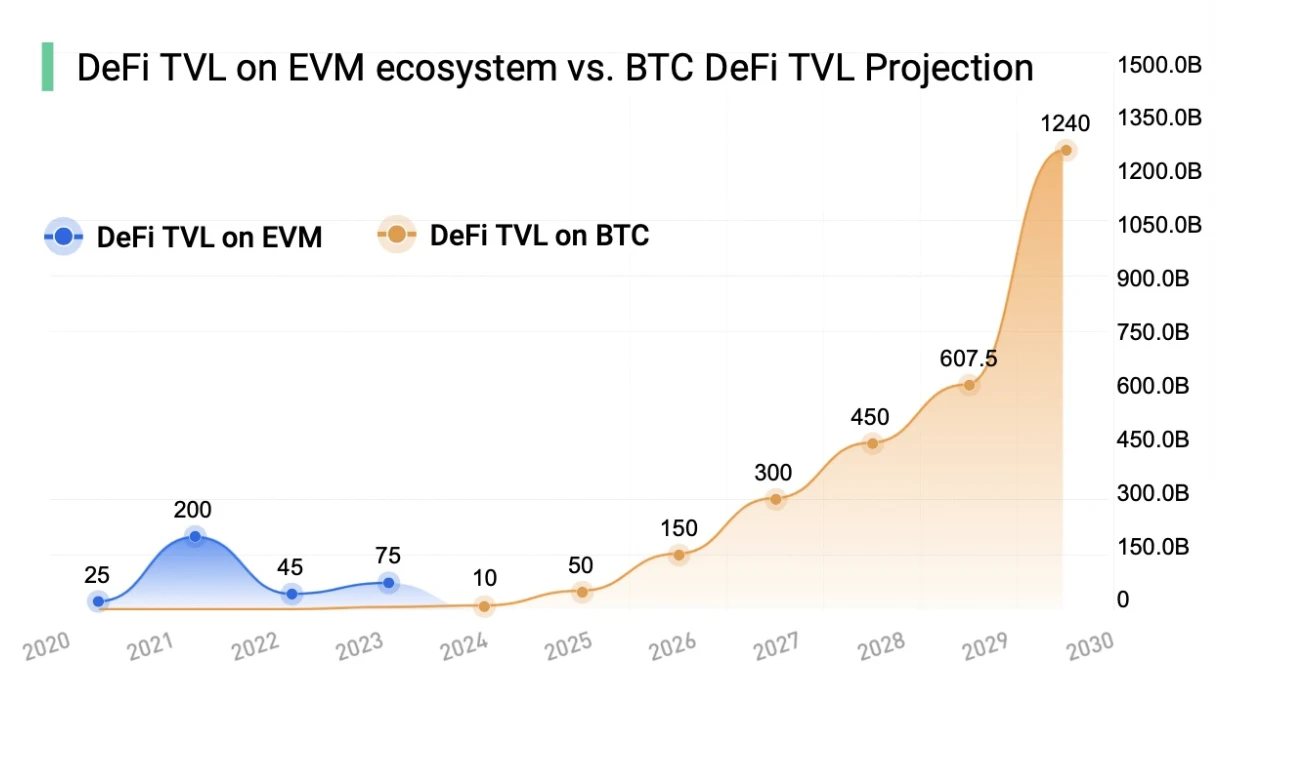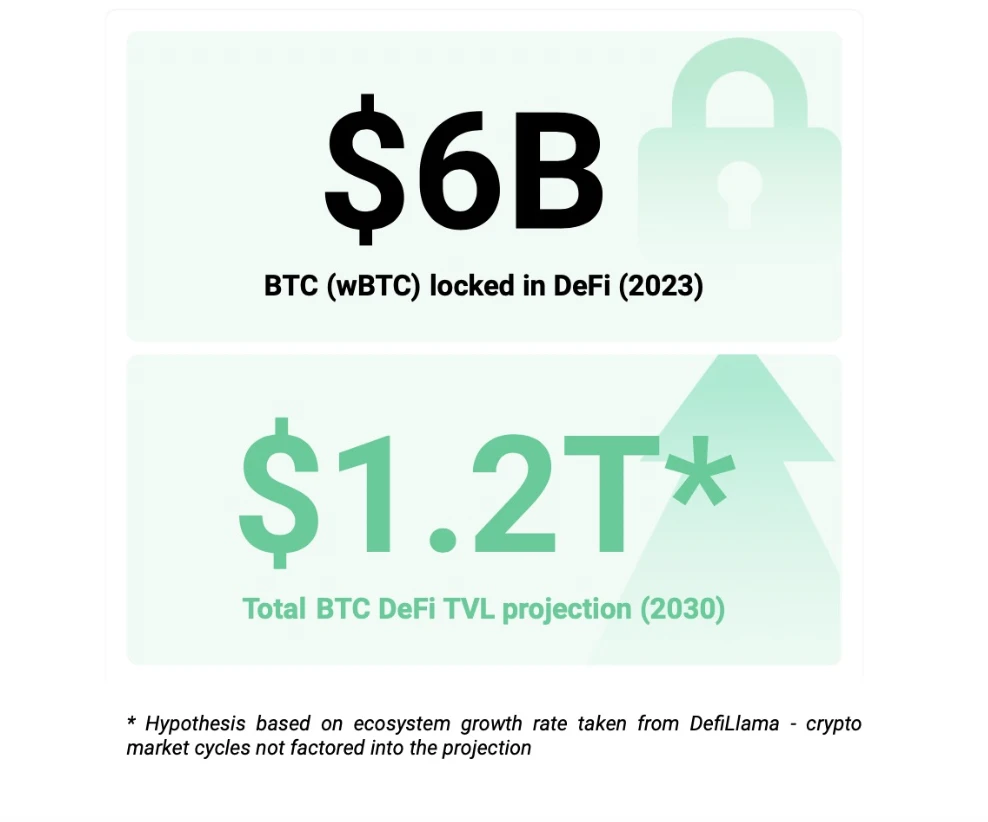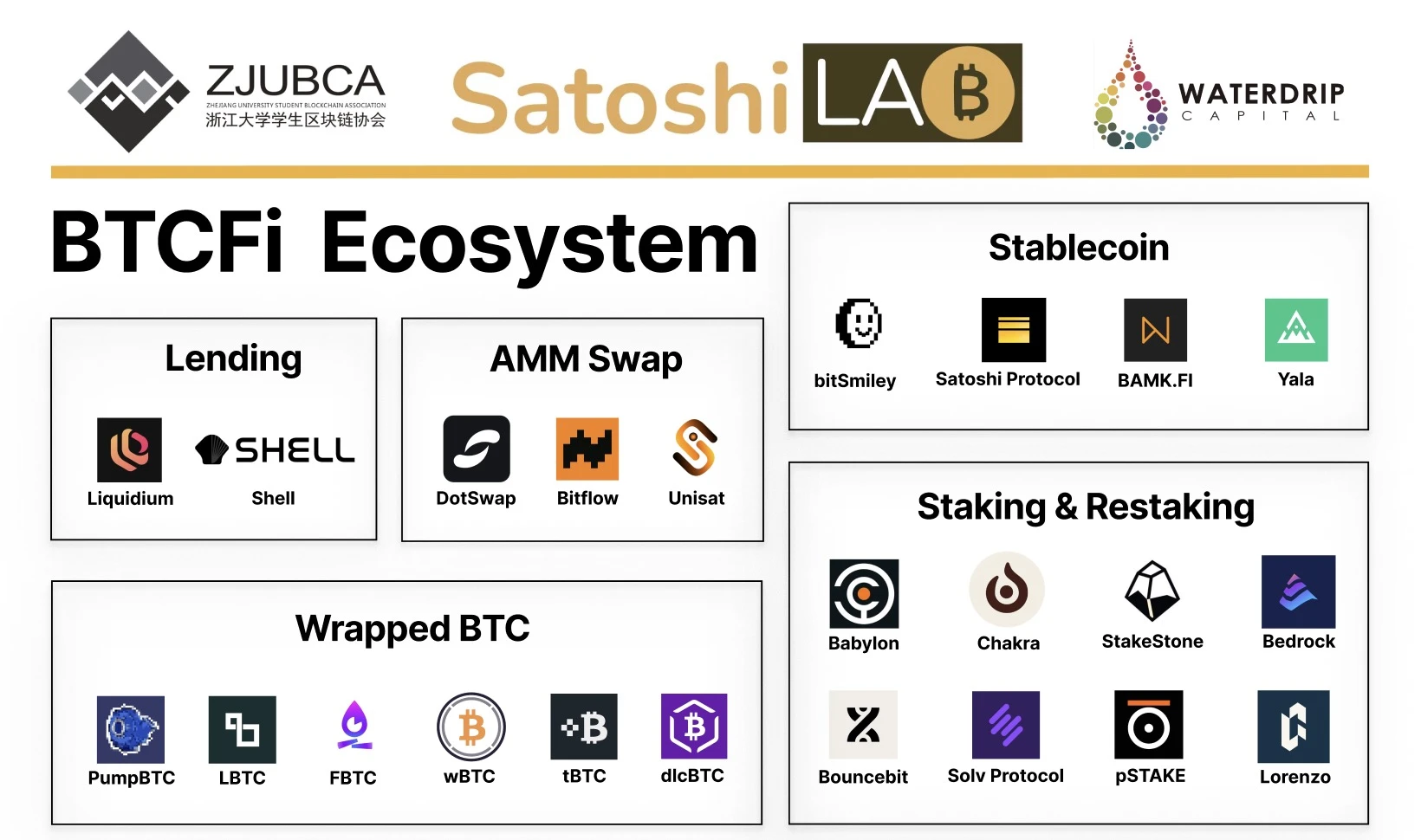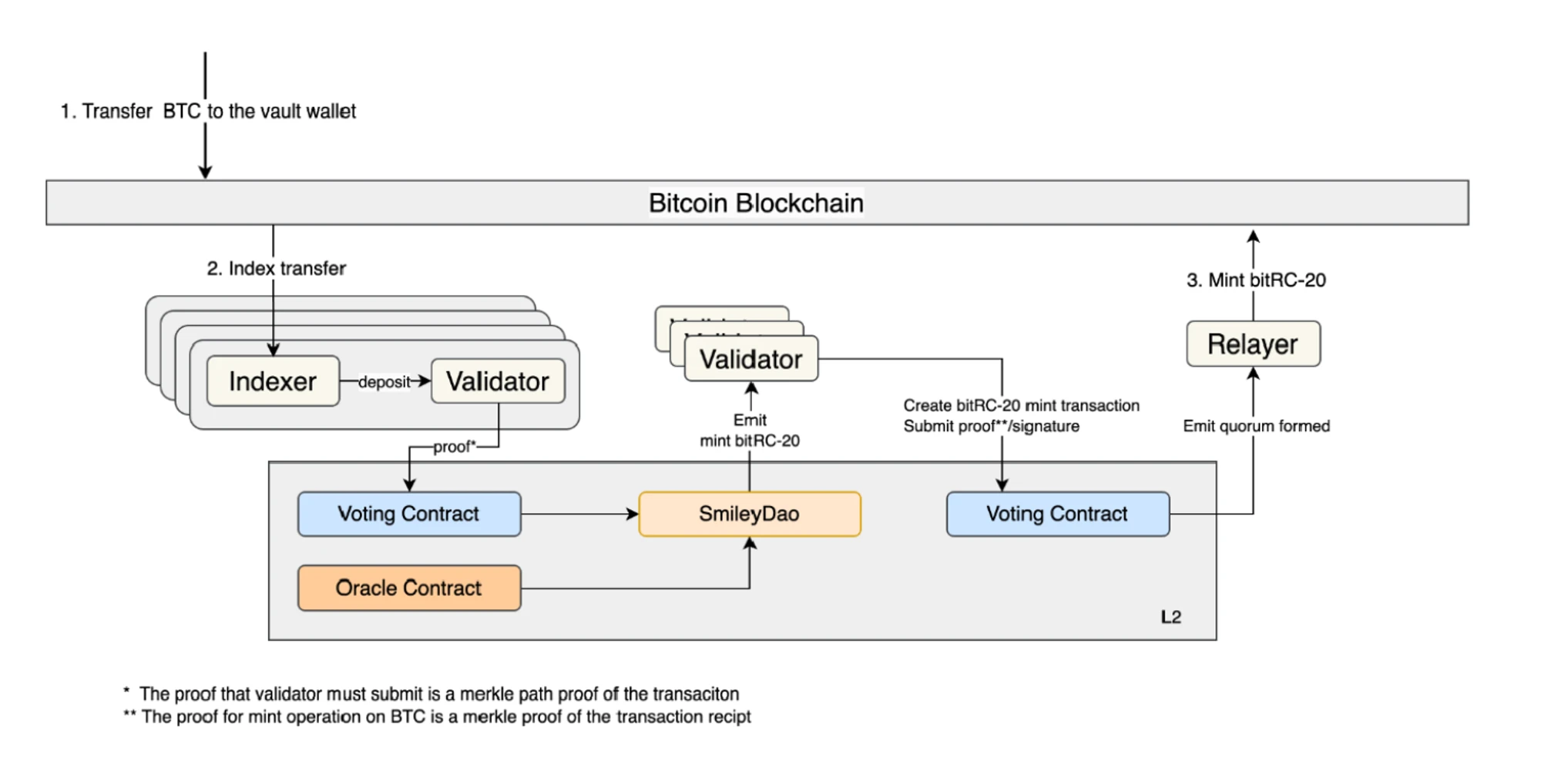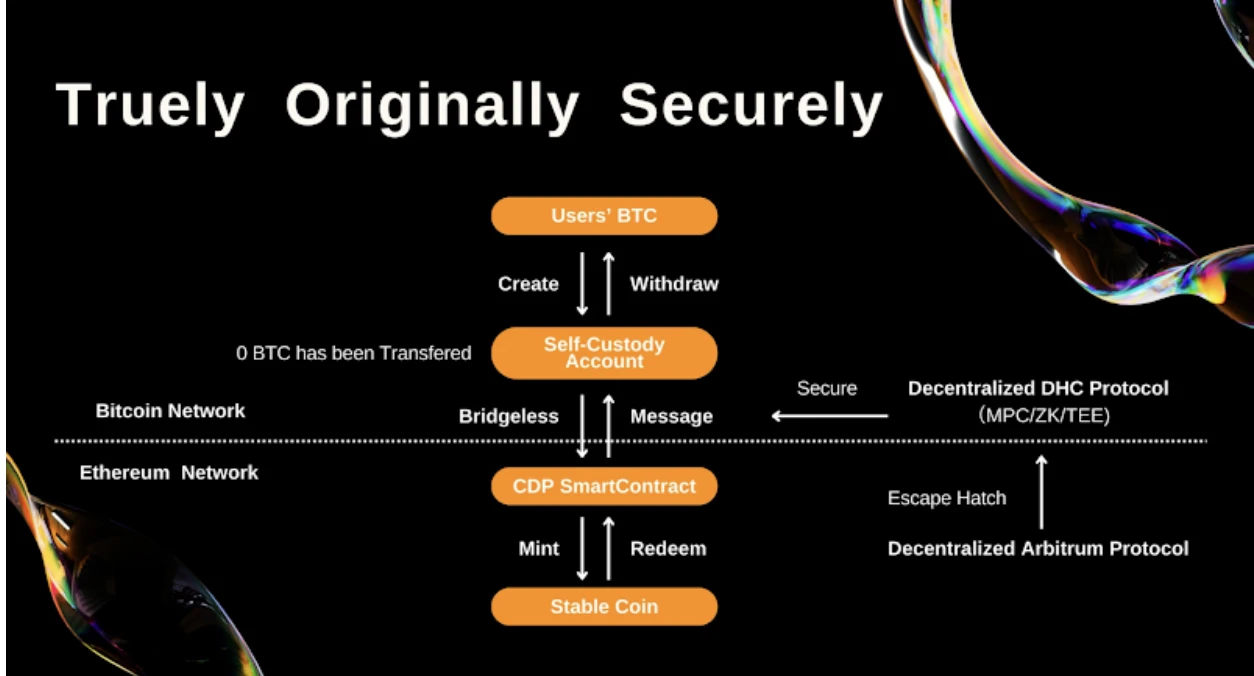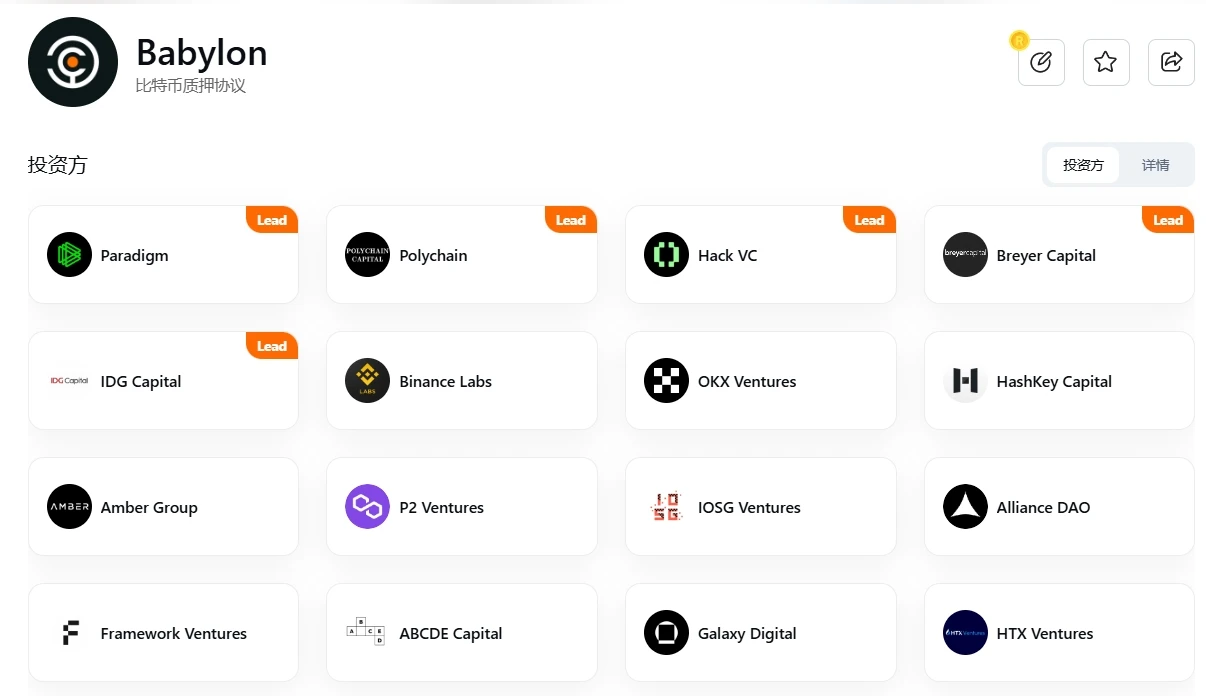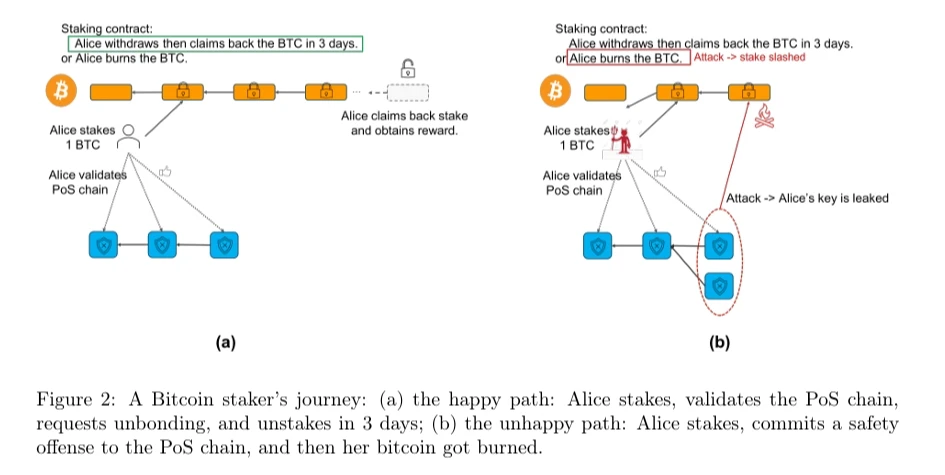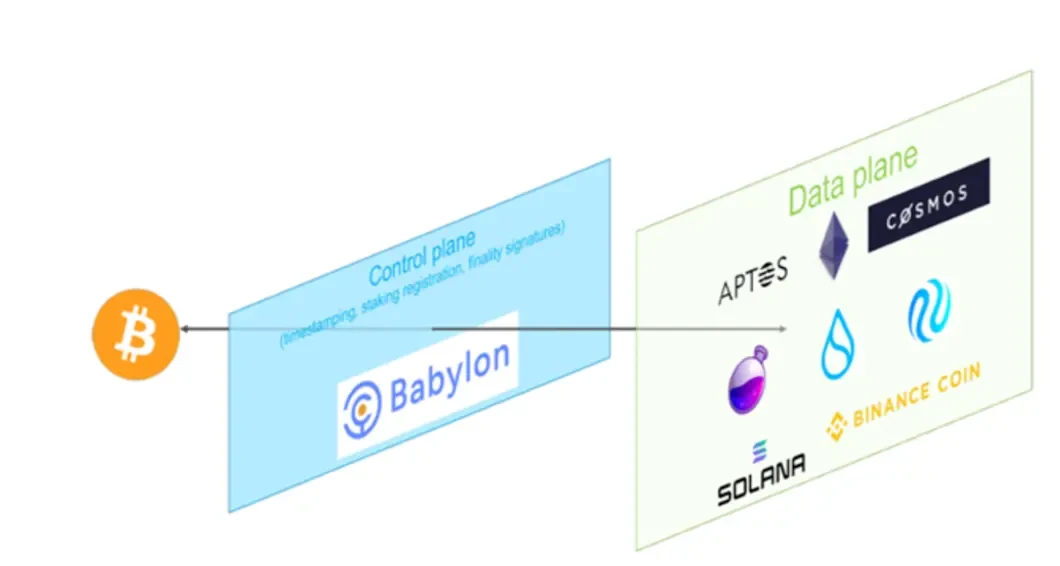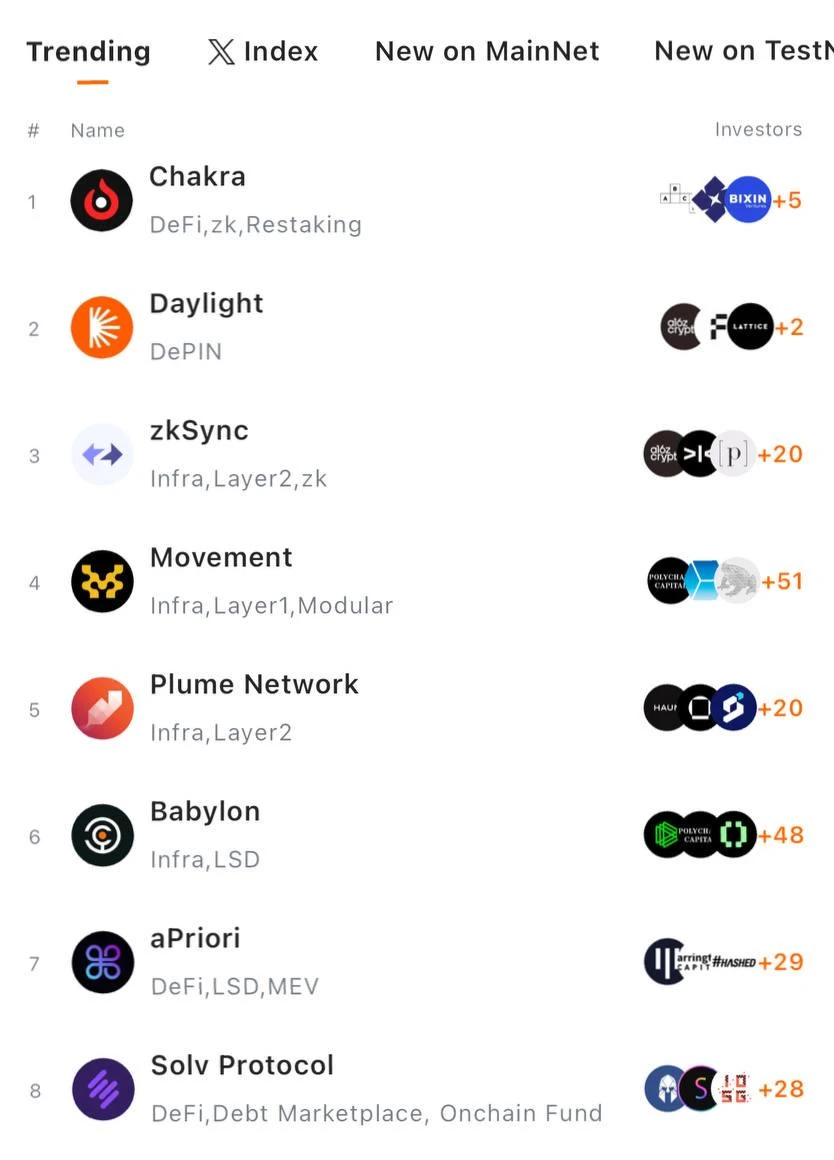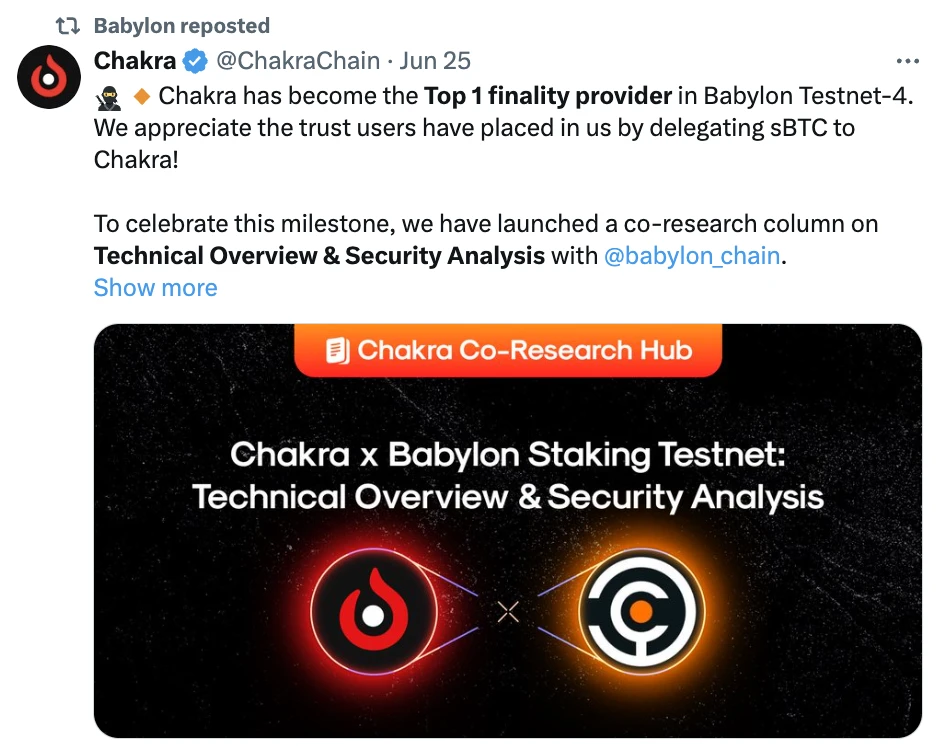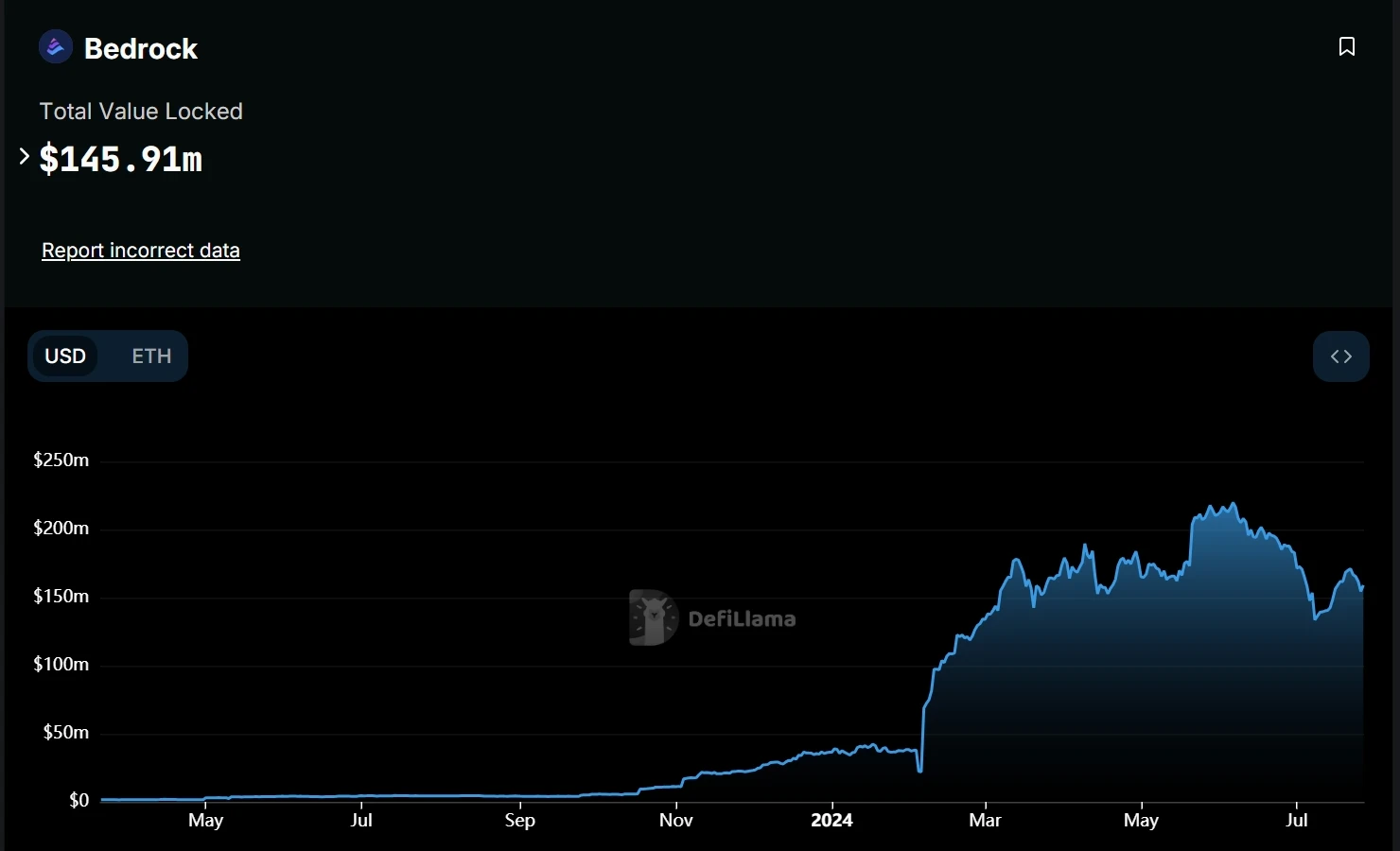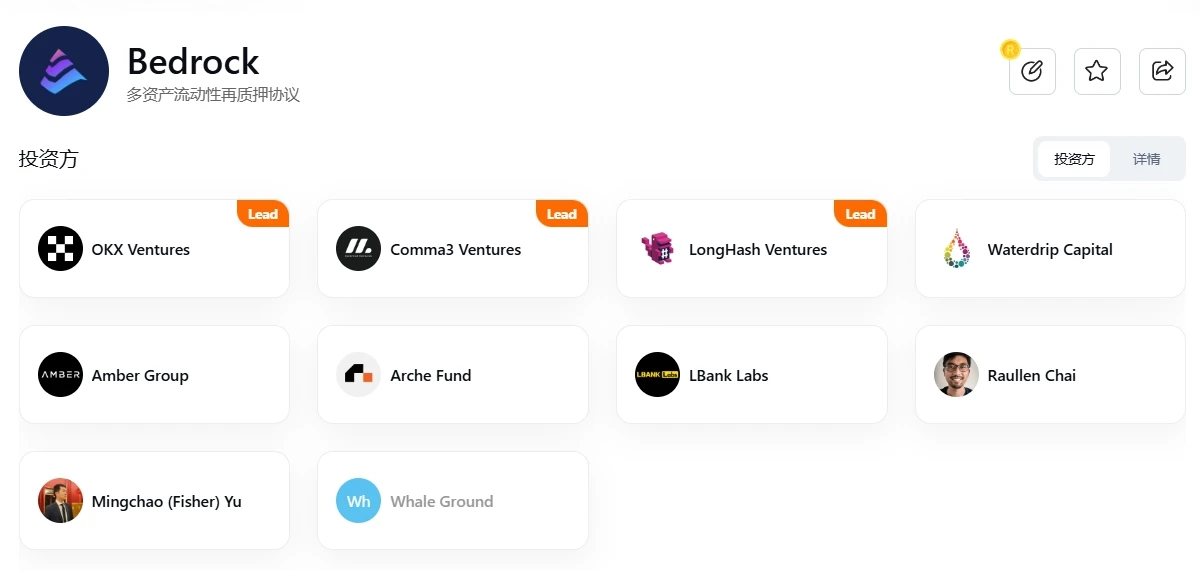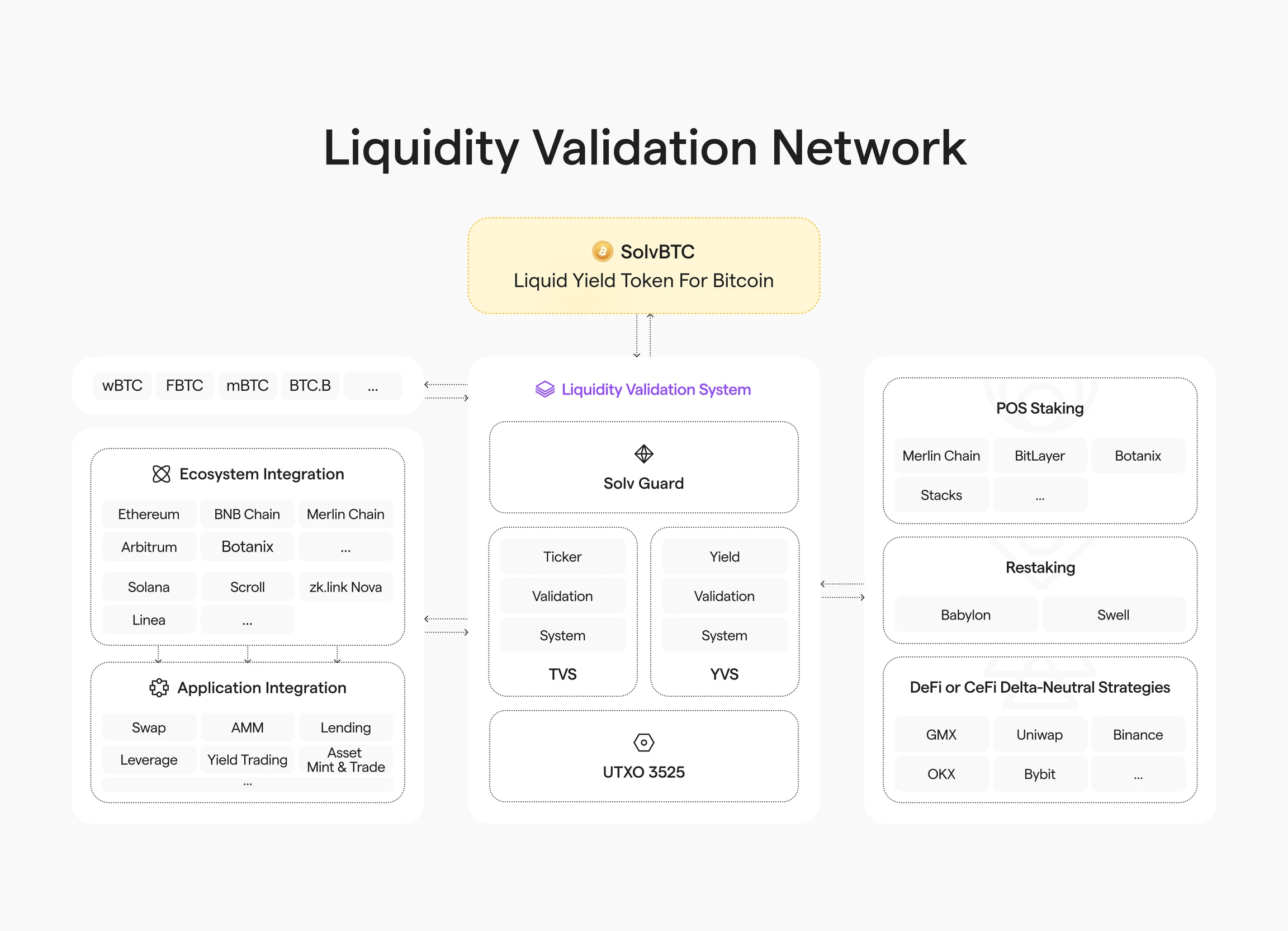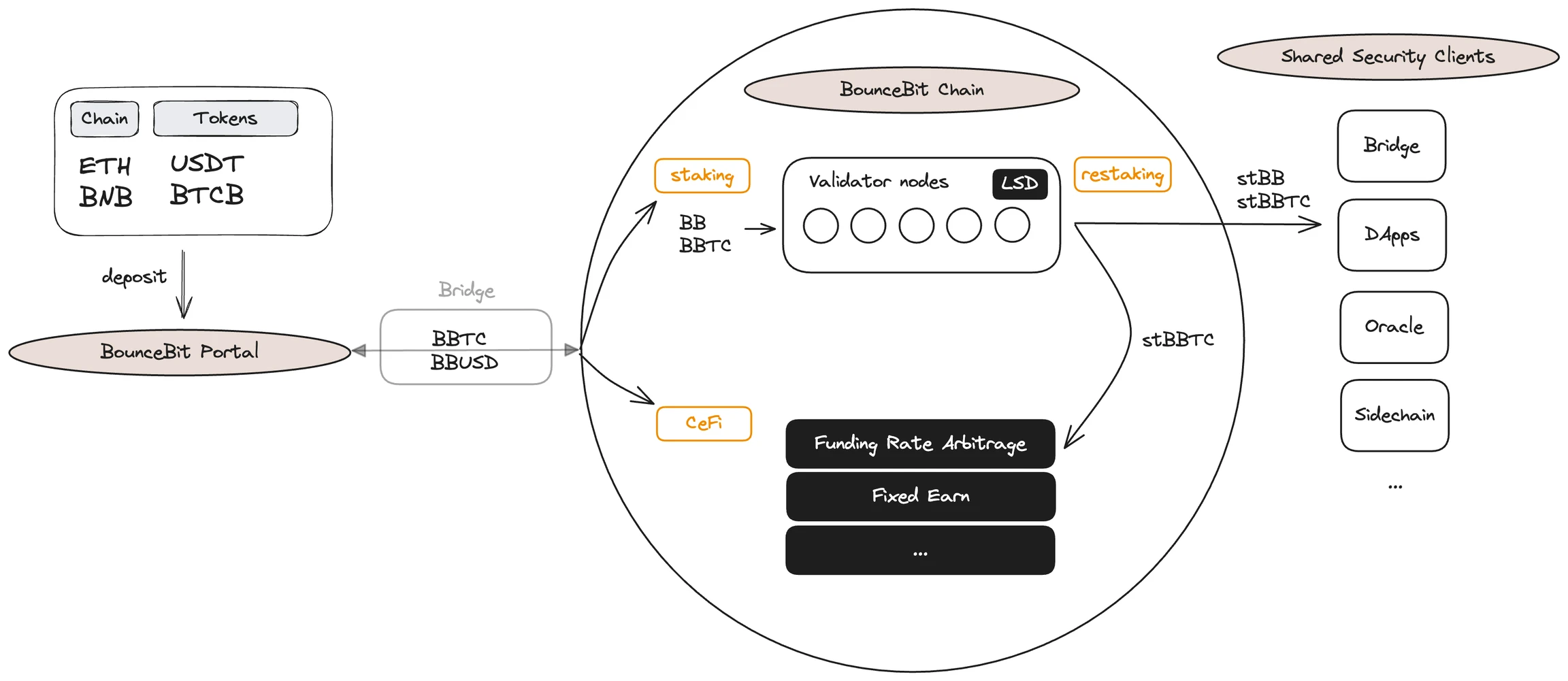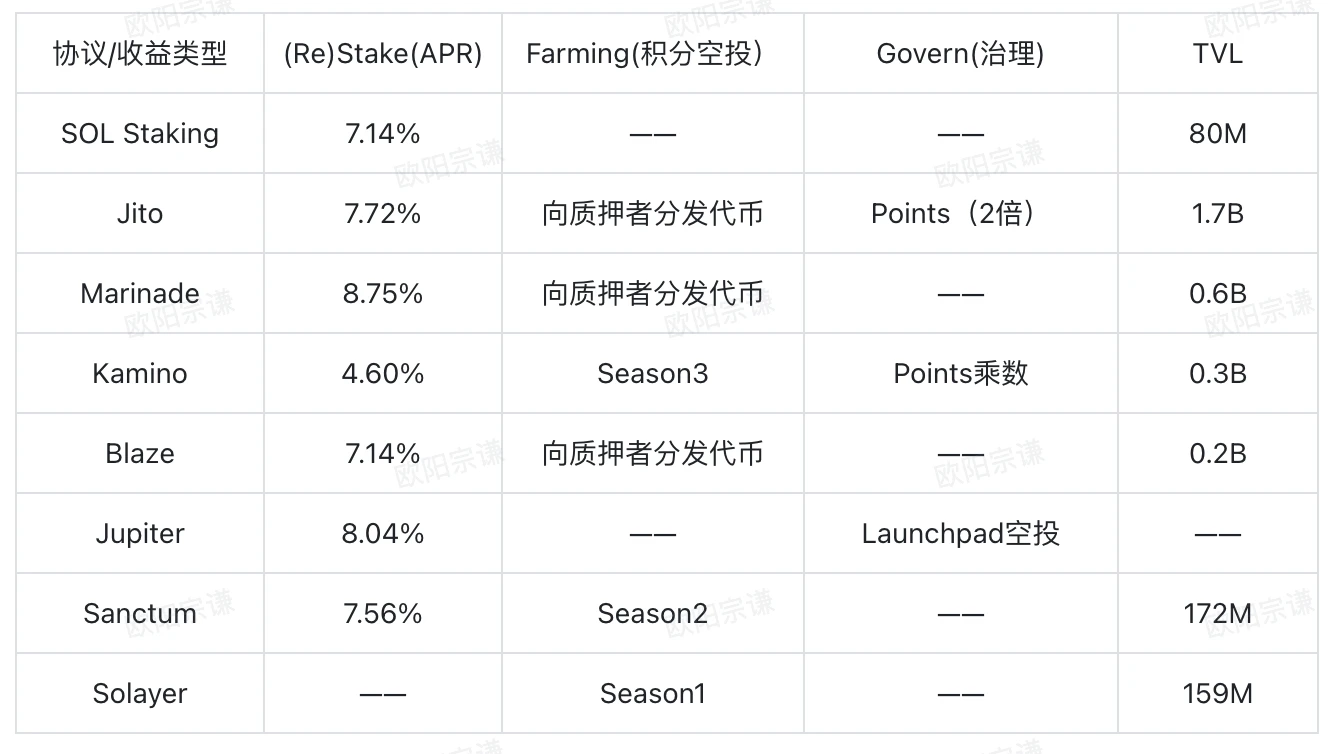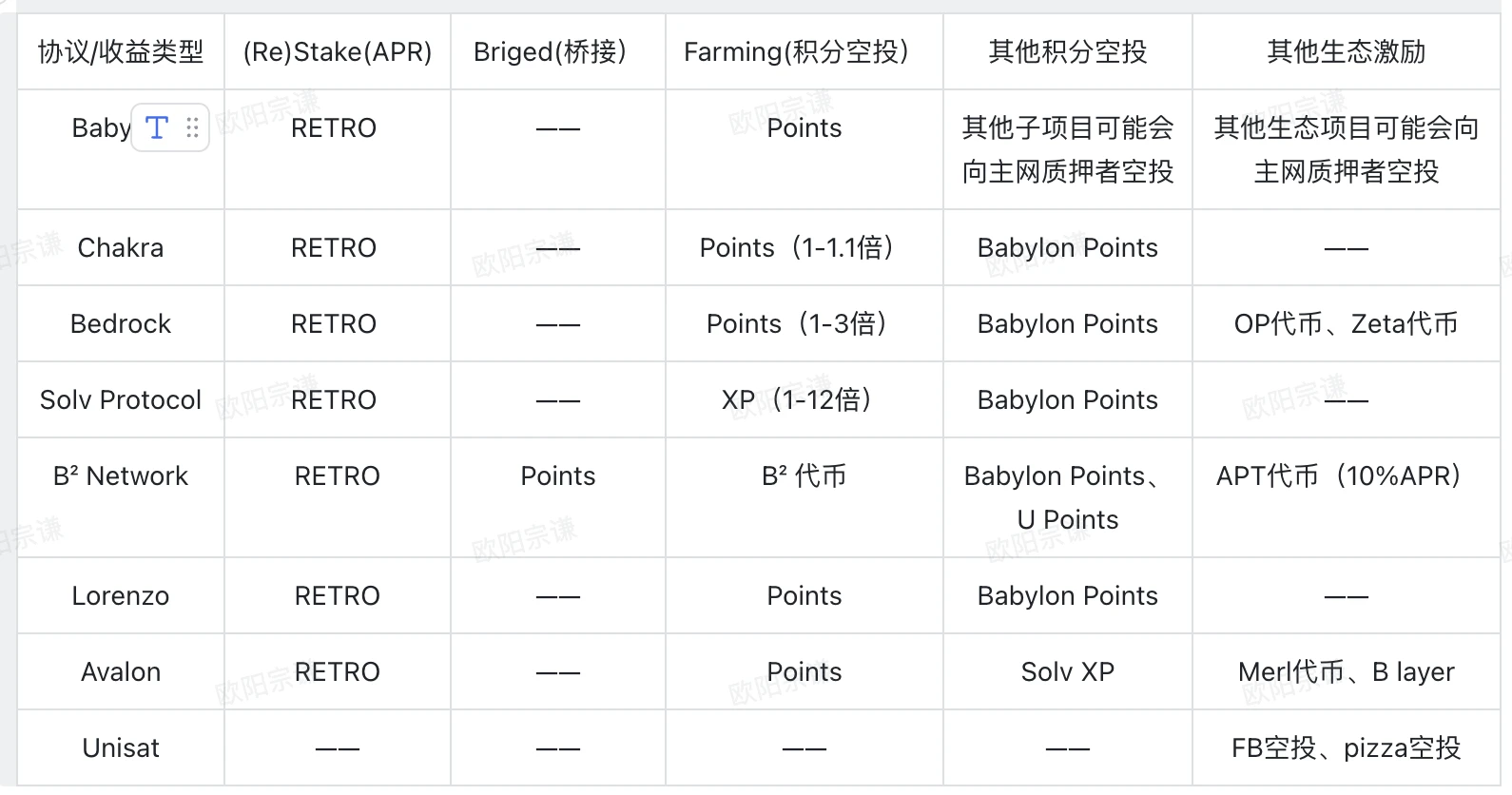BTCFi: Build your own mobile Bitcoin bank, a comprehensive explanation from Lending to Staking
author:
Freya Knight Ausdin from ZJUBCA
Elaine Youyu from Satoshi Lab
summary
As Bitcoin (BTC) becomes increasingly established in the financial market, the BTCFi (Bitcoin Finance) sector is rapidly becoming the forefront of cryptocurrency innovation. BTCFi covers a range of Bitcoin-based financial services, including lending, staking, trading, and derivatives. This research report deeply analyzes several key tracks of BTCFi, exploring stablecoins, lending services (Lending), staking services (Staking), restaking services (Restaking), and the combination of centralized and decentralized finance (CeDeFi).
The report first introduces the size and growth potential of the BTCFi market, emphasizing how the participation of institutional investors can bring stability and maturity to the market. Then, the mechanism of stablecoins is explored in detail, including the different types of centralized and decentralized stablecoins, and their roles in the BTCFi ecosystem. In the field of lending, it analyzes how users can obtain liquidity through Bitcoin lending, while evaluating major lending platforms and products.
In terms of staking services, the report highlights key projects such as Babylon, which provide staking services for other PoS chains by leveraging Bitcoin’s security while creating income opportunities for Bitcoin holders. Restaking services further unlock the liquidity of staked assets, providing users with an additional source of income.
In addition, the research report also explores the CeDeFi model, which combines the security of centralized finance and the flexibility of decentralized finance to provide users with a more convenient financial service experience.
Finally, the report reveals the unique advantages and potential risks of BTCFi compared to other crypto-financial sectors by comparing the security, yield and ecological richness of different asset classes. As the BTCFi sector continues to develop, it is expected to usher in more innovations and capital inflows, further consolidating Bitcoins leadership in the financial sector.
Keywords: BTCFi, stablecoin, lending, staking, re-staking, CeDeFi, Bitcoin finance
BTCfi Track Overview
• Squirrels collect acorns before hibernation and collect them in a hidden and safe place; pirates bury the looted gold and silver treasures under the soil known only to themselves; and in todays society, people will deposit cash regularly, not only for an annualized return of less than 3%, but also for a sense of security. Now imagine that you have a sum of cash, you are optimistic about the cryptocurrency market but do not want to take too much risk, and want to obtain assets with a higher ROI, so you choose BTC, which is called digital gold. You want to hold BTC for a long time, instead of watching the price of the currency fluctuate up and down and making unnecessary operations to cause losses. At this time, you need something to use your BTC and give full play to the liquidity and functions brought by its value, just like Defi on Ethereum. It not only allows you to hold your assets for a longer period of time, but also brings additional benefits, and reuses the liquidity of your assets for the second time, or even the third time. The many ways to play and projects are worth our in-depth study.
• BTCFi (Bitcoin Finance) is like a mobile Bitcoin bank, a series of financial activities around Bitcoin, including Bitcoin lending, staking, trading, futures and derivatives. According to data from CryptoCompare and CoinGecko, the size of the BTCFi market has reached about $10 billion in 2023. According to data from Defilama, it is predicted that the BTCFI market will reach $1.2 trillion by 2030. This data includes the total locked volume (TVL) of Bitcoin in the decentralized finance (DeFi) ecosystem, as well as the market size of Bitcoin-related financial products and services. Over the past decade, the BTCFi market has gradually shown significant growth potential, attracting more and more institutional participation, such as Grayscale, BlackRock and JPMorgan, which have begun to get involved in the Bitcoin and BTCFi markets. The participation of institutional investors has not only brought a large amount of capital inflows, increased market liquidity and stability, but also improved the maturity and standardization of the market, bringing higher recognition and trust to the BTCFi market.
• This article will explore several hot areas in the current cryptocurrency financial market, including Bitcoin Lending (BTC Lending), Stablecoin (Stablecoin), Staking Service (Staking Service), Restaking Service (Restaking Service), and CeDeFi (CeDeFi), which combines centralized and decentralized finance. Through detailed introduction and analysis of these areas, we will understand their operating mechanisms, market development, major platforms and products, risk management measures, and future development trends.
Part 2: BTCFi Track Segmentation
1. Stablecoin
Introduction
• Stablecoins are cryptocurrencies designed to maintain a stable value. They are usually pegged to fiat currencies or other valuable assets to reduce price volatility. Stablecoins achieve price stability through reserve asset support or algorithmic supply regulation. They are widely used in transactions, payments, and cross-border transfers, allowing users to enjoy the advantages of blockchain technology while avoiding the drastic fluctuations of traditional cryptocurrencies.
• There is such an impossible triangle in economics: a sovereign state cannot simultaneously achieve a fixed exchange rate system, free capital flow and independent monetary policy. Similarly, in the context of Crypto stablecoins, there is also such an impossible triangle: price stability, decentralization and capital efficiency cannot be achieved at the same time.
• Classification by the degree of centralization of stablecoins and classification by collateral type are two relatively intuitive dimensions. Among the current mainstream stablecoins, they can be classified by the degree of centralization into centralized stablecoins (represented by USDT, USDC, and FDUSD) and decentralized stablecoins (represented by DAI, FRAX, and USDe). Classification by collateral type can be divided into fiat currency/physical collateral, crypto asset collateral, and undercollateralization.
• According to DefiLlama data on July 14, the total market value of stablecoins is now reported at 162.372 billion US dollars. In terms of market value, USDT and USDC are far ahead, among which USDT is far ahead, accounting for 69.23% of the entire stablecoin market value. DAI, USDe, and FDUSD follow closely behind, ranking 3-5 in market value. All other stablecoins currently account for less than 0.5% of the total market value.
• Centralized stablecoins are basically fiat/physical collateral, and are essentially RWAs of fiat/other physical assets. For example, USDT and USDC are 1:1 pegged to the US dollar, and PAXG and XAUT are pegged to the price of gold. Decentralized stablecoins are generally crypto-asset collateralized or uncollateralized (or undercollateralized). DAI and USDe are both crypto-asset collateralized, which can be further divided into equal collateralization or overcollateralization. Uncollateralized (or undercollateralized) is generally what is commonly referred to as algorithmic stablecoins, represented by FRAX and the former UST. Compared with centralized stablecoins, decentralized stablecoins have a low market value and are slightly more complex in design, and many star projects have also been born. In the BTC ecosystem, the stablecoin projects worth paying attention to are all decentralized stablecoins, so the following introduces the mechanism of decentralized stablecoins.
The top ten stablecoins by market capitalization on July 14, 2024. Source: Coingecko
The top ten stablecoin market capitalizations on July 14, 2024, source: DefiLlama
Decentralized Stablecoin Mechanism
• Next, we will introduce the CDP mechanism (overcollateralization) represented by DAI and the contract hedging mechanism (equal collateralization) represented by Ethena. In addition, there is also the mechanism of algorithmic stablecoins, which will not be introduced in detail here.
• CDP (Colllateralized Debt Position) stands for collateralized debt position, which is a mechanism in a decentralized financial system to generate stablecoins by pledging crypto assets. After being first created by MakerDAO, it has been applied in many different types of projects such as DeFi, NFTFi, etc.
○ DAI is a decentralized, over-collateralized stablecoin created by MakerDAO, designed to maintain a 1:1 peg with the US dollar. The operation of DAI relies on smart contracts and decentralized autonomous organizations (DAOs) to maintain its stability. Its core mechanisms include over-collateralization, collateralized debt positions (CDPs), liquidation mechanisms, and the role of the governance token MKR.
○ CDP is a key mechanism in the MakerDAO system, used to manage and control the process of generating DAI. In MakerDAO, CDP is now called Vaults, but its core functions and mechanisms remain the same. The following is a detailed operation process of CDP/Vault:
i. Generate DAI : Users deposit their crypto assets (such as ETH) into MakerDAOs smart contract, create a new CDP/Vault, and then generate DAI based on the collateral assets. The generated DAI is part of the debt borrowed by the user, and the collateral serves as a guarantee for the debt.
ii. Overcollateralization : To prevent liquidation, users must keep their CDP/Vault collateral ratio higher than the minimum collateral ratio set by the system (e.g. 150%). This means that if a user borrows 100 DAI, they must lock up at least 150 DAI worth of collateral.
iii. Repayment/ Liquidation : Users need to repay the generated DAI plus a certain stability fee (denominated in MKR) to redeem their collateral. If the user fails to maintain a sufficient collateral ratio, their collateral will be liquidated.
• Delta represents the percentage change in the derivative price relative to the price of the underlying asset. For example, if the Delta of an option is 0.5, when the price of the underlying asset increases by $1, the option price is expected to increase by $0.5. Delta neutral position is an investment strategy that offsets the risk of price changes by holding a certain amount of the underlying asset and derivatives. Its goal is to make the overall Delta value of the portfolio zero, so as to keep the value of the position unchanged when the price of the underlying asset fluctuates. For example, for a certain amount of spot ETH, buy an equivalent amount of ETH short perpetual contract.
Ethena tokenizes the “Delta-neutral” arbitrage trade of ETH by issuing a stablecoin USDe that represents the value of the Delta-neutral position. Therefore, their stablecoin USDe has the following two sources of income:
○ Staking income
○ Basis difference and funding rate
○ Ethena achieves equal collateral and additional income through hedging.
Project 1: Bitsmiley Protocol
Project Overview
• The first native stablecoin project in the BTC ecosystem.
• On December 14, 2023, OKX Ventures announced a strategic investment in the BTC ecosystems stablecoin protocol bitSmiley, which allows users to overcollateralize native BTC on the BTC network to mint the stablecoin bitUSD. At the same time, bitSmiley also includes lending and derivatives protocols, aiming to provide a new financial ecosystem for Bitcoin. Previously, bitSmiley was selected as a high-quality project for the BTC hackathon jointly organized by ABCDE and OKX Ventures in November 2023.
• On January 28, 2024, the first round of token financing was announced, led by OKX Ventures and ABCDE, with participation from CMS Holdings, Satoshi Lab, Foresight Ventures, LK Venture, Silvermine Capital, and relevant persons from Delphi Digital and Particle Network. On February 2, LK Venture, a subsidiary of Hong Kong-listed company Linekong Interactive, announced on the X platform that it had participated in the first round of financing of bitSmiley through BTC NEXT, a Bitcoin network ecosystem investment management fund. On March 4, KuCoin Ventures issued a tweet announcing a strategic investment in the Bitcoin DeFi ecosystem project bitSmiley.
How it works
• bitSmiley is a Bitcoin native stablecoin project based on the Fintegra framework. It consists of the decentralized over-collateralized stablecoin bitUSD and the native trustless lending protocol (bitLending). bitUSD is based on bitRC-20, which is a modified BRC-20 and is compatible with BRC-20. bitUSD has added Mint and Burn operations to meet the needs of stablecoin minting and destruction.
• bitSmiley launched a new DeFi inscription protocol called bitRC-20 in January. The protocols first asset, OG PASS NFT, is also known as bitDisc. bitDisc is divided into two levels: gold card and black card. The gold card is allocated to Bitcoin OGs and industry leaders, with a total of less than 40 holders. Starting from February 4, the black card will be open to the public in the form of BRC-20 inscriptions through whitelist activities and public minting activities, which once caused congestion on the chain. Subsequently, the project party stated that it would compensate for unsuccessful inscriptions.
• $bitUSD stablecoin operation mechanism
The operating mechanism of $bitUSD is similar to that of $DAI. First, the user over-collateralizes, and then bitSmileyDAO on L2 receives the oracle information and performs consensus verification, and then sends the Mint bitRC-20 information to the BTC main network.
Image source: https://github.com/bitSmiley-protocol/whitepaper/blob/main/BitSmiley_White_Paper.pdf
• The logic of liquidation and redemption is similar to that of MakerDAO, and liquidation is carried out in the form of a Dutch auction.
Image source: https://github.com/bitSmiley-protocol/whitepaper/blob/main/BitSmiley_White_Paper.pdf
Project Progress Participation Opportunities
• bitSmiley will be launched on Alphanet on BitLayer on May 1, 2024. Among them, the maximum loan value ratio (LTV) is 50%. In order to prevent users from being liquidated, a relatively low LTV ratio is set. As the adoption rate of bitUSD increases, the project party will gradually increase the LTV.
• bitSmiley and the Merlin community will launch an exclusive liquidity incentive grant to increase the liquidity of bitUSD starting May 15, 2024. The detailed rules are as follows:
○ bitSmiley will provide up to 3,150,000 $BIT tokens as rewards to Merlin community members. Rewards will be unlocked based on user behavior in the Merlin community. Season 1: May 15, 2024 – August 15, 2024.
○ Reward method: reaching the bitUSD minting target and increasing the liquidity of the bitUSD pool on bitCow. The details of the two incentive methods are shown in the figure below. Liquidity incentives will be allocated based on the bitPoints obtained by users on the Merlin chain. The more points a user obtains, the more token incentives he or she will receive.
Image source: https://medium.com/@bitsmiley/exclusive-liquidity-incentive-grant-details-bitsmiley-x-bitcow-alpha-net-on-merlin-chain-3f88c4ddb32d
Project 2: Bamk.fi (NUSD)
Project Overview
• Bamk.fi protocol is the issuer of NUSD (Nakamoto Dollar), which is a synthetic dollar on Bitcoin L1. NUSD circulates on BRC 20-5 byte and Runes protocols (currently the two are equivalent).
How it works
• The project is designed to have 2 phases. In the first phase, NUSD and USDe are supported at a 1:1 ratio, and NUSD holders can accumulate BAMK in each block (the earlier you have more NUSD, the more BAMK you can get). In the second phase, NUSD will be fully supported by delta-neutral Bitcoin positions and obtain native returns, namely Bitcoin bonds, while opening up BTC-based minting and redemption. However, the minting method currently provided by the official website is minting by USDT 1:1.
• The project token BAMK mentioned above is in rune form, rune code BAMK•OF•NAKAMOTO•DOLLAR , imprinted on April 21, 2024, with a maximum supply of 21,000,000,000 (21 billion). 6.25% of the supply has been given as rewards to all NUSD holders. Simply buy NUSD and keep it in your wallet to start accumulating BAMK tokens. Each block between 844,492 and 886,454 – a total of 41,972 blocks will accumulate 31,250 BAMK, distributed proportionally to the users NUSD holdings divided by the total NUSD TVL at that block height.
Project 3: Yala Labs
Project Overview
• Through its self-built modular infrastructure, Yala enables its stablecoin $YU to flow freely and securely between various ecosystems, releasing BTC liquidity and bringing huge financial vitality to the entire crypto ecosystem.
• Core products include:
○ Over-collateralized stablecoin $YU: This stablecoin is generated by over-collateralizing Bitcoin. The infrastructure is not only based on the Bitcoin native protocol, but can also be freely and securely deployed in EVM and other ecosystems.
○ Metamint: The core component of $YU, enabling users to conveniently use native Bitcoin to mint $YU in various ecosystems, injecting Bitcoin liquidity into these ecosystems.
○ Insurance derivatives: Provide comprehensive insurance solutions within the DeFi ecosystem to create arbitrage opportunities for users.
How it works
• In order to facilitate users to use $YU in various ecosystems, the Metamint solution is launched. Whether using native Bitcoin or wrapped BTC on EVM as collateral, users can easily mint $YU on any target chain. In order to lower the threshold for use, users do not need to manually package Bitcoin, but simply pledge BTC. The system will automatically generate the wrapped BTC of the required target chain in the background, thereby minting $YU on the target chain.
• Through this smooth asset conversion solution, users are able to participate in DeFi protocols across ecosystems, including cross-chain yield farming, staking, and other DeFi activities, opening up new income opportunities. This multi-chain solution significantly enhances users potential to earn greater returns. Unlike traditional stablecoin companies that centralize profits, Yala returns system-generated fees to core $YU holders, ensuring that users can directly benefit from the growth of the ecosystem.
• Features and advantages
○ Using Bitcoin as the main collateral, while also enjoying the security and resilience of the Bitcoin network.
○ Users can participate in various DeFi activities through $YU and obtain income.
○ Yala follows a user-centric decentralized governance structure, and revenue will be returned to core users.
Project Progress Participation Opportunities:
Through cooperation with outstanding projects, Yala provides users with multiple income opportunities while ensuring security. For example, through cooperation with Babylon, Yala users can over-collateralize BTC on the platform and mint stablecoin $YU, and then further pledge these collaterals to the Babylon platform to achieve multiple benefits. Since the Babylon staking agreement does not require third-party custody, this integration ensures the absolute security of user assets while increasing returns.
Yalas roadmap focuses on building a strong liquidity layer that connects Bitcoin to the outstanding Layer 1 and Layer 2 ecosystems in the market. To ensure security and the best user experience, Yala will launch its mainnet and testnet in phases:
• Testnet V 0: $YU stablecoin issuance, Pro mode, oracle and oracle;
• Testnet V1: $YU stablecoin light mode with meta-yield;
• V1 release: Insurance module and security upgrades.
• V2 goes live: governance framework launched.
As the testnet launch approaches, Yala has received support from first-tier funds. Please look forward to the announcement of financing news in the near future for specific institutions and valuations.
Project 4: Satoshi Protocol
Project Overview
• The first CDP stablecoin protocol in the BTC ecosystem, based on the BEVM ecosystem.
• Satoshi Protocol announced the completion of its seed round of financing on March 26, 2024. This round of financing was led by Web3Port Foundation and Waterdrip Capital, and participated by BEVM Foundation, Cogitent venture, Statoshi Lab and other institutions. On July 9, 2024, it announced the completion of a financing of US$2 million.
How it works
• Enable Bitcoin holders to release liquidity from their assets through low interest rates; at the same time, the Satoshi Protocol is a multi-chain protocol, and its stablecoin SAT has a highly compatible multi-token standard mechanism. Satoshi Protocol currently has two tokens: the stablecoin SAT pegged to the US dollar and the utility token OSHI that incentivizes and rewards ecosystem participants. Users can deposit BTC and BTC-based interest-bearing assets such as LST, mint the US dollar stablecoin $SAT with a minimum collateral rate of 110%, and participate in transactions, liquidity pools, lending and other scenarios to earn income.
• In the Satoshi protocol, users must maintain a collateral ratio of at least 110% when opening a position to avoid liquidation. For example, when lending 100 SAT, users need to lock BTC with a total value higher than 110 SAT as collateral. If the BTC price drops and the collateral value falls below the 110% collateral ratio, the protocol will initiate a liquidation mechanism.
• The Stability Pool is the core mechanism of the Satoshi Protocol, which aims to ensure the stability of the system by providing liquidity to pay off the debts of liquidated positions. When an undercollateralized position (collateral ratio less than 110%) is liquidated, the SP uses SAT to pay off the debt and obtain the liquidated BTC collateral. Users participating in the Stability Pool can purchase these BTC collaterals at a discount, and the protocol uses the SAT obtained from these liquidations to repay the debt.
Project Progress Participation Opportunities
• The latest announcement stated that Satoshi Protocol is developing the Runes stablecoin based on the Bitcoin mainnet. In addition, through cooperation with projects such as Omini Network, it will connect the Bitcoin and Ethereum ecosystems to realize the vision of full-chain stablecoin.
• Currently, an airdrop points activity for $OSHI is underway. Users can earn points in four ways: voting for projects in the BVB program, depositing collateral to borrow $SAT, providing liquidity, and making recommendations. $OSHI will be distributed based on the points in the future.
Project 5: BTU
Project Overview
• BTU is the first decentralized stablecoin project in the Bitcoin ecosystem. It adopts the collateralized debt position (CDP) model, allowing users to issue stablecoins based on BTC assets. Through seamless decentralized design, BTU solves the problem of insufficient liquidity for Bitcoin holders in the existing decentralized finance (DeFi) ecosystem and provides a safer and trustless stablecoin solution.
How it works
1. Bitcoin-backed stablecoin: BTU is a decentralized stablecoin fully collateralized by Bitcoin. By locking BTC in the BTU protocol, users can mint stablecoins directly without transferring assets off-chain or giving up control of BTC. This design not only ensures decentralization, but also avoids the risks of traditional centralized exchanges or custodians.
2. No cross-chain bridge required: Unlike other solutions that rely on cross-chain bridges, BTU completes all operations within the Bitcoin network, and users do not need to transfer BTC across chains. This design eliminates the third-party risks that may arise during the cross-chain process and further strengthens the users asset security and control.
3. Proof of assets without transactions: BTU introduces a mechanism to prove BTC holdings without transactions, and users can prove their assets without transferring their Bitcoin. This trustless, seamless design provides users with additional flexibility, allowing them to participate in the DeFi ecosystem while maintaining full control over their BTC assets.
4. Decentralized CDP model: BTU adopts a decentralized collateralized debt position (CDP) model, where users can fully control when to issue or redeem BTU stablecoins. The protocol design ensures that the users BTC can only be used with the users consent, maintaining a high degree of decentralization and control.
5. Improve liquidity and leverage: BTU is the first protocol to map BTC on the Bitcoin network and increase its liquidity and leverage. Through this mechanism, BTC holders can introduce their assets into the DeFi ecosystem without sacrificing decentralization and enjoy greater flexibility and investment opportunities.
• BTU provides BTC holders with a trustless, decentralized way to participate in the DeFi ecosystem by unlocking Bitcoin’s liquidity. Traditionally, Bitcoin holders have found it difficult to participate in DeFi and on-chain financial activities without relying on centralized exchanges or custodians. The emergence of BTU brings new opportunities for Bitcoin holders to safely issue stablecoins, increase liquidity, and maintain control over BTC.
• This innovative decentralized stablecoin solution not only provides BTC holders with more financial options, but also brings new growth potential to the DeFi ecosystem. By promoting the release of Bitcoin liquidity, BTU has the potential to promote the emergence of a new generation of DeFi applications and protocols, further expanding the user base and usage scenarios of the DeFi market.
• BTU’s infrastructure design focuses on decentralization and security. Since BTU operates entirely within the Bitcoin network, there is no need to introduce cross-chain bridges or third-party escrow, which greatly reduces issues associated with centralized risks. BTU’s decentralized model ensures that it can be seamlessly integrated with the existing Bitcoin ecosystem without adding additional technical or security risks.
Project Progress Participation Opportunities
• The project has currently received investment support from Waterdrip Capital, Founder Fund and Radiance Ventures.
2. Lending track
Introduction
• Bitcoin lending (BTC Lending) is a financial service that allows users to obtain loans by using Bitcoin as collateral or to earn interest by lending Bitcoin. Borrowers deposit Bitcoin into a lending platform, which provides loans based on the value of Bitcoin. Borrowers pay interest and lenders earn income. This model provides liquidity for Bitcoin holders and a new income channel for investors.
• Mortgage loans in BTC Lending are similar to home mortgage loans in traditional finance. If the borrower defaults, the platform can auction the mortgaged Bitcoin to recover the loan. BTC Lending platforms usually take the following risk management measures:
1. Control the collateral ratio and loan-to-value ratio (LTV) : The platform will set a LTV. For example, if the value of Bitcoin is $10,000, the loan amount will not exceed $5,000 (LTV is 50%). This provides a buffer for Bitcoin price fluctuations.
2. Replenishment of collateral and margin call: When the price of Bitcoin falls, borrowers need to replenish collateral to reduce LTV. If they fail to replenish, the platform may force liquidation.
3. Forced liquidation mechanism: When the borrower fails to add margin, the platform will sell part or all of the collateralized Bitcoin to repay the loan.
4. Risk management and insurance: Some platforms will set up insurance funds or cooperate with insurance companies to provide additional protection.
• From 2013 to 2017, Bitcoin was gradually accepted as a new asset class, and early lending platforms such as Bitbond and BTCJam emerged, mainly lending through the P2P model. From 2018 to 2019, the cryptocurrency market grew rapidly, and more platforms such as BlockFi, Celsius Network and Nexo emerged. The DeFi concept promoted the rise of decentralized lending platforms.
• Since 2020, the COVID-19 pandemic has caused turmoil in the global financial market. Cryptocurrency has attracted attention as a safe-haven asset, the demand for BTC Lending has increased significantly, and the scale of lending has expanded rapidly. Major platforms have continued to innovate and launched a variety of financial products and services, such as flash loans, liquidity mining, and cryptocurrency reward credit cards, attracting more users.
• The BTC Lending track has become an important part of the cryptocurrency market. Its services cover major cryptocurrencies such as Bitcoin and Ethereum, and its lending products include mortgages, deposit accounts, and unsecured loans. The platform makes profits through interest rate spreads and handling fees. Popular platforms such as Aave provide flash loans and liquidity mining rewards, MakerDAO provides DAI Savings Rate (DSR), and Yala provides DeFi income based on stablecoins. Next, we will introduce the popular products in the BTC Lending track.
Project 1: Liquidium
Project Overview
• Liquidium is a P2P lending protocol that runs on Bitcoin, enabling users to lend and borrow native Bitcoin using native Ordinals and Runes assets as collateral.
• On December 11, 2023, Liquidium completed a Pre-Seed round of financing of US$1.25 million, with participation from Bitcoin Frontier Fund, Side Door Ventures, Actai Ventures, Sora Ventures, Spicy Capital, UTXO Management and others.
• On July 18, 2024, it completed a seed round of financing of US$2.75 million. This round of financing was led by Wise 3 Ventures, with participation from Portal Ventures, Asymmetric Capital, AGE Fund, Newman Capital, etc.
How it works
• The platform completes Bitcoin lending in a secure and non-custodial manner through Partially Signed Bitcoin Transactions (PSBT) and Discrete Log Contracts (DLC) on Bitcoin L1. Currently supports lending of Ordinals and Runes assets (BRC-20 is being tested).
• Tokenomics: Rune form LIQUIDIUM•TOKEN, launched on July 22, 2024, with a total supply of 100 M. The Genesis airdrop has been completed. As of September 3, the market price of LIQUIDIUM•TOKEN is about $0.168, with a market value of $2 M.
• According to Geniidata , as of September 3, the total transaction volume of the protocol reached about 2,400 BTC, most of which were Ordinals and a small part were Runes assets. The protocols transaction volume peaked in April and May, with an average of about 15-20 BTC of Ordinal assets traded per day. With the launch of Runes, DAU and transaction volume reached a new peak and then gradually declined. In August and September, the transaction volume dropped to an average of 5-10 BTC per day.
Project 2: Shell Finance
Project Overview
• A stablecoin protocol based on BTC L1 that supports using BTC, Ordinals NFT, Runes, BRC-20, and ARC-20 assets as collateral to obtain $bitUSD.
How it works
• Similar to Liquidium, native lending of BTC is implemented based on PSBT and DLC technologies. PSBT allows secure and collaborative transaction signing, while DLC allows conditional and trustless contract execution based on verified external data.
• Unlike Liquidium’s P2P model, Shell Finance adopts a peer-to-pool solution, namely Peer-to-Pool, to maximize utilization.
• Testnet is not yet launched.
3. Staking Track
Introduction
• Staking is often recognized for its safe, stable interest-generating characteristics. When staking tokens, users usually gain some kind of access, privilege, or reward token over time in exchange for their locked coins, and can withdraw their tokens anytime, anywhere. Staking occurs at the network level and is used entirely to protect the network. Ethereums staking proof-of-stake (PoS) mechanism is the most typical staking example, with more than 565,000 validators holding a standard 32 ETH, which is worth more than $32 billion today. Staking assets are often linked to DeFi liquidity, yield rewards, and governance rights. Tokens are locked in a blockchain network or protocol for rewards, and these tokens will be used to provide key services to users.
• The concept of shared security brought by staking provides a new dimension for the modular track, which is to utilize the potential of digital gold and silver. From a narrative point of view, it not only releases liquidity of trillions of market value, but also is the key to the future expansion. Taking the recent Bitcoin staking protocol Babylon and Ethereum re-staking protocol EigenLayer, which have won huge financing of US$70 million and US$100 million respectively, as examples, it is not difficult to see that the top VCs are very recognized for this track.
• At this stage, this track is mainly divided into two factions: 1. Layer 1 with sufficient security as the functional layer of Rollups; 2. Recreate a security that is close to that of Bitcoin/Ethereum and has better performance. For example, the well-known Celestia uses a pure DA functional architecture and low gas cost to create a secure, decentralized and high-performance DA layer in a short period of time. The disadvantage of this solution is that it will take some time to complete the degree of decentralization and it lacks orthodoxy. Compared with the first two, the newly born projects such as Babylon and Eigenlayer are more neutral. Their advantage is that while inheriting orthodoxy and security, they give the main chain assets more application value-through POS, borrowing the asset value of Bitcoin or Ethereum to create shared security services.
Project 1: Babylon
Project Overview
• Babylon is a layer 1 blockchain founded by Professor David Tse of Stanford University. The project’s mission is to bring Bitcoin’s unparalleled security to all PoS blockchains without any additional energy costs. The team consists of researchers and experienced developers from Stanford University and experienced business consultants.
• Babylon is a Bitcoin staking protocol. Its core component is a POS public chain compatible with Cosmos IBC. It can lock Bitcoin on the Bitcoin mainnet to provide security for other POS consumer chains, and obtain staking income on the Babylon mainnet or POS consumer chain. Babylon enables Bitcoin to use its unique security and decentralization characteristics to provide economic security for other POS chains to achieve rapid launch of other projects.
Image source: https://www.rootdata.com/zh/Projects/detail/Babylon?k=MjgwNQ%3D%3D
• Babylons team consists of 32 technicians and consultants with strong technical strength. The teams consultants include Sunny Aggarwal, co-founder of Osmosis lab, and Sreeram Kannan, founder of Eigenlayer, as a strategic consultant. As of June 1, 2024, Babylon has disclosed multiple rounds of financing, with a total amount exceeding $96.8 Million. The table below shows that compared with other Bitcoin Layer 2 projects, Babylon has a higher financing amount and many institutions.
How it works
• In terms of working mechanism, Babylon is consistent with Ethereum’s re-staking protocol EigenLayer. “Bitcoin + Babylon” can be regarded as “Ethereum + EigenLayer”, but because Bitcoin does not support smart contracts, Babylon needs to do one more step than EigenLayer, which is also the most difficult step from 0-1, making the non-staking Bitcoin become stakingable first, and then re-staking Bitcoin.
• Babylon uses UTXO to implement the pledge contract, which is called Remote Staking. That is, the security of BTC is remotely transmitted to the PoS chain through the middle layer. At the same time, the idea is to cleverly combine the existing operation codes. The specific steps to implement the contract can be broken down into the following four steps:
a. Locking funds
The user sends funds to an address controlled by a multi-signature. Through OP_CTV (OP_CHECKTEMPLATEVERIFY, which allows the creation of predefined transaction templates to ensure that transactions can only be executed according to specific structures and conditions), the contract can specify that these funds can only be spent if certain conditions are met. After the funds are locked, a new UTXO is generated to indicate that these funds have been pledged;
b. Conditional verification
Calling OP_CSV (OP_CHECKSEQUENCEVERIFY, which allows a relative time lock to be set, based on the transaction sequence number, indicating that the UTXO can only be spent after a certain relative time or number of blocks) can achieve time lock, which can ensure that funds cannot be withdrawn within a certain period of time. Combined with the OP_CTV mentioned above, staking, unstaking (if the staking time is met, the pledger can spend the locked UTXO), and slashing (if the pledger behaves maliciously, the UTXO will be forced to be spent to the locked address and restricted to an unspendable state, similar to a black hole address) can be achieved;
Image source: https://docs.babylonchain.io/assets/files/btc_staking_litepaper-32bfea0c243773f0bfac63e148387aef.pdf
c. Status Update
Whenever a user stakes or withdraws staked funds, it involves the creation and spending of UTXO. New transaction outputs generate new UTXOs, and old UTXOs are marked as spent. In this way, every transaction and fund flow is accurately recorded on the blockchain, ensuring transparency and security;
d. Profit distribution
Based on the staked amount and staked time, the contract calculates the rewards due and distributes them by generating new UTXOs. These rewards can be unlocked and spent after certain conditions are met through script conditions.
• Babylon’s overall architecture can be divided into three layers: Bitcoin (as a timestamp server), Babylon (a Cosmos Zone) as the middle layer, and the PoS chain demand layer. Babylon calls the latter two the Control Plane (i.e. Babylon itself) and the Data Plane (i.e. various PoS consumer chains).
• Validators of each PoS chain download the Babylon blocks and observe whether their PoS checkpoints are included in the Babylon blocks checked by Bitcoin. This enables the PoS chain to detect discrepancies, for example if a Babylon validator creates an unavailable block checked by Bitcoin and lies about the PoS checkpoints included in the unavailable block.
• Hence the slashing rule, whereby validators with double-signed conflicting PoS blocks can be slashed if they do not withdraw their stake when the attack is detected. A malicious PoS validator could therefore fork the PoS chain when assigning Bitcoin timestamps to blocks on the canonical PoS chain. This changes the canonical PoS chain from the top chain to the bottom chain as seen by later PoS clients. While this is a successful security attack, it results in the malicious PoS validator’s stake being slashed because they had double-signed conflicting blocks but have not yet withdrawn their staked stake.
Image source: https://docs.babylonchain.io/assets/files/btc_staking_litepaper-32bfea0c243773f0bfac63e148387aef.pdf
Project Progress Participation Opportunities
• In February 2023, Babylon has implemented BTC timestamping testnet. BTC staking poc was implemented in July, and BTC staking testnet will be launched in Q4.
• In Q2 of 2024, Babylon will launch Mainnet, and Data Availability will be launched in Q3-4 of 2024. It is currently in testnet 4. Users participating in the testnet will receive some project points as incentives, which can be exchanged for governance token airdrops on the mainnet.
• The mainnet is expected to be launched soon. On August 1, 2024, Babylon has begun cooperating with a number of popular restake projects such as Chakra, Bedrock, Solv Protocol, and PStake to start the pre-staking process. Users can already participate in Babylons pre-staking through the above projects and get the corresponding shares. Now is a very good time to participate. After the mainnet is launched later, users can also get governance tokens by staking on the mainnet, and pledgers can get the annualized income of the pledged network at any time.
4. Restaking Track
Introduction
• On the basis of staking, ETH introduced the concept of restaking for the first time. ReStaking is the act of using liquid staked token assets to stake validators on other networks and blockchains to gain more returns while still helping to improve the security and decentralization of the new network. Through ReStaking, investors can get twice the returns from both the original network and the ReStaking network. Although ReStaking enables stakers to gain greater returns, it also carries the risk of smart contract risks and the risk of fraud in validator staking behavior.
• In addition to accepting native assets, the ReStaking network also accepts other assets such as LSD tokens, LP tokens, etc., which increases the security of the network. And while still generating real income for the protocol and its users, it unlocks an unlimited source of liquidity in the DeFi market. Revenue for both the ReStaking network and the standard network comes from security leasing, fees generated by validators and dApps, protocols, and layers. Staking participants on the network will receive a portion of the networks revenue and may also receive inflation rewards in the networks native tokens.
• Many BTC holders will stake their BTC in projects such as babylon and bedrock to get considerable annualized yields and governance tokens. Early participants can get quite good returns and long-term returns. However, their BTC will lose other application values due to staking. So, how to release new liquidity to make their BTC more valuable? Since it is impossible to release more liquidity of BTC, then start with LSD to release the liquidity of LSD obtained through staking. Users are naturally very willing to pay for it and restake the asset certificates obtained by staking BTC in exchange for five-fold returns – annualized returns from staking, governance tokens obtained from staking, annualized returns from restaking, and governance tokens obtained from restaking.
Project 1: Chakra
Project Overview
• Chakra is an innovative modular settlement infrastructure that uses zero-knowledge proof technology to ensure the security and efficiency of decentralization. By integrating decentralized Bitcoin liquidity, Chakra provides a more secure and smooth settlement experience. Users can easily stake Bitcoin with one click, use Chakras advanced settlement network, and participate in more liquidity income opportunities including Babylons LST/LRT projects.
• Chakra is supported by the Starknet ecosystem. In March 2024, the official announced that it had received early investment from investment institutions such as StarkWare and CoinSummer, as well as many Wanbi Hou and miners.
How it works
• Chakra provides a highly modular Bitcoin settlement network, enables the free flow of BTC derivative assets between major public chains, injects liquidity into DeFi protocols, and solves the liquidity and interoperability issues of Bitcoin in the current blockchain ecosystem. At the same time, Chakra helps Layer 2, decentralized exchanges (DEX), and DeFi protocols bypass the complexity of building Bitcoin settlement infrastructure, avoiding the waste of resources and security risks caused by repeated construction of settlement systems.
• Chakra leverages the finality provided by the Babylon network to enhance economic security and prevent settlement errors caused by consensus attacks. Chakra is able to provide efficient zero-knowledge proof aggregation for Layer 2 state and liquidity settlement, ensuring frictionless circulation of cross-chain Bitcoin assets. The Parallel VM designed and implemented by the Chakra team achieves a performance of more than 5,000 TPS per second with 4 threads through multi-threaded optimization, and can even reach 100,000 TPS in a high-configuration environment with 64 threads.
Project Progress
• Chakra launched Devnet in May to encourage developers to build an application ecosystem together. It has established deep connections with multiple local communities of Starknet. In the future, it will launch a series of developer education activities and Devnet incentives with the support of Starknet. In June, in the testnet activities launched by Chakra and Babylon at the same time, Chakra continued to become the first Finality Provider of the entire Babylon network, contributing 41% of the staking users of the entire network to the Babylon ecosystem.
• From August 1 to August 7, 2024, Chakra and Binance Web3 Wallet jointly launched the Babylon pre-staking event. Participants were provided with dual rewards of Babylon potential income and ChakraPrana, and had the opportunity to receive rewards of other ecological tokens in the settlement system in the future. The event has ended, and a total of 48,767 users participated in the staking.
Project 2: Bedrock
Project Overview
• Bedrock is a multi-asset liquidity re-staking protocol powered by a non-custodial solution designed in partnership with RockX. Bedrock leverages its universal standards to unlock liquidity and maximum value for PoS tokens such as ETH and IOTX, as well as existing liquid staking tokens called uniETH and uniIOTX.
• Bedrock provides institutional-level services to users, with a total staked value of over $200 million as of May 2, and built the first liquid staked Bitcoin (uniBTC) on Babylon.
TVL to date:
Image source: https://defillama.com/protocol/bedrock#information
• TVL peaked at over $200 million and has shown signs of climbing again. In addition, the project has also conducted in-depth cooperation with ecological protocols such as Pendle, Karak, Celer, and zkLink, highlighting its influence in the DeFi ecosystem.
Image source: https://www.rootdata.com/zh/Projects/detail/Bedrock?k=MTI1OTM%3D
• Bedrock has received investments from well-known institutions such as OKX Ventures, Waterdrip Capital, and Amber Group. On May 2, 2024, OKX Ventures announced that it had led the investment in Bedrock. Dora Yue, founder of OKX Ventures, said: With the rapid development of DeFi, the total value of on-chain pledges has exceeded US$93.4 billion, of which 48% comes from the liquidity re-pledge sector. The investment in Bedrock aims to accelerate liquidity re-pledge solutions. We hope to provide community users with diversified and secure asset management options. We look forward to the gradual maturity and systematization of DeFi usage scenarios, and to promoting the sustainable development of the Web3 industry.
How it works
• Use uniBTC supported by babylon for re-staking. Users can use wBTC on the ETH chain to stake on Babylon. After staking their WBTC, they will receive a 1:1 certificate – uniBTC. The users uniBTC can be exchanged for wBTC at any time. Babylon provides core technical support. Users who stake wBTC and hold uniBTC can obtain Bedrock and Babylon points. Through uniBTC and Babylon, Bedrock provides liquidity staking services to support Babylons PoS chain. By minting uniBTC, the stability and security of the Babylon PoS chain is ensured, and the Bedrock product is further expanded to the BTC chain.
Image source: https://www.bedrock.technology/
• From August 1 to August 7, 2024, Bedrock and Binance jointly launched a staking activity. Starting from August 1, users only need to hold uniBTC in their wallets, and each token will receive 21 times the Bedrock diamond reward every hour, and Binance Web3 wallet users will receive another 3 times increase.
Image source : https://docs.bedrock.technology/bedrock-lrt/bedrock-diamonds
5. Decentralized hosting
• Recently, BitGO, the main body behind wBTC, announced that it would hand over control of wBTC, which triggered discussions in the market about the security of WBTC.
WBTC
• WBTC is the earliest and most widely used form of Bitcoin wrapper, which bridges Bitcoin assets to the Ethereum ecosystem and uses Ethereums DeFi scenario to release Bitcoin liquidity. However, this ERC-20 token form of wrapped Bitcoin has centralized management issues, causing users to worry about the security and transparency of their assets. MakerDAO voted to stop new lending for WBTC. More than $30 million worth of WBTC was destroyed in one week. There is an increased interest in competing products such as tBTC and Coinbase s new product cbBTC.
tBTC
• Consider minting tBTC when crossing from BTC to ETH. Convert from WBTC to tBTC and convert it back to native BTC for safekeeping or continue to use tBTC as DeFi collateral. tBTC has good DeFi adoption and has a lot of use cases in Curve Finance. In addition to being actively traded in major stable and volatility pools, tBTC can also mint crvUSD stablecoins.
FBTC
• FBTC is a new type of synthetic asset on the entire chain, pegged to BTC at a 1:1 ratio, and supports the circulation of BTC on the entire chain (Ominichain). Subsequently, FBTC will be launched on ETH, Mantle, and BNB chains, and then expanded to more networks. FBTC can be used to earn interest and seek returns in DeFI scenarios.
• The key advantages of FBTC are:
1. FBTC will use a multi-party computing custodian provider.
2. FBTC’s minting, destruction, and cross-chain bridges are managed by the TSS (Threshold Signature Scheme) network run by the FBTC Security Committee and the security company.
3. FBTC’s reserve proof can be queried in real time and monitored and verified by security companies.
4. The locked FBTC can be used to allocate the underlying BTC as collateral or participate in Babylon staking.
5. Built by a well-known and long-standing party in the blockchain ecosystem and Bitcoin financial institutions, trusted by a large number of miners and builders.
6. Governance tokens as incentives.
dlcBTC
• dlcBTC is a Bitcoin Deed on Ethereum that enables Bitcoin holders to participate in DeFi protocols while retaining full ownership of their assets. It uses Discreet Log Contracts (DLCs) to lock Bitcoin in a multi-signature UTXO, where one key is held by the user and the other is distributed across the decentralized network. The minted dlcBTC tokens can be used as collateral in various DeFi platforms such as Curve and AAVE.
• dlcBTC differs from wBTC and other bridge assets like tBTC and BTC.B by locking Bitcoin on-chain and embracing user sovereignty as a core principle by eliminating the need for intermediaries or custodians. dlcBTC is secured by the full computing power of the Bitcoin network and does not require users to send their Bitcoin to a third-party deposit address.
• Compared with wBTC, dlcBTC has the following advantages:
1. Self-sealing: dlcBTC is self-sealed by the depositor (dlcBTC merchant), locking BTC in DLC. Self-sealing means that DLC can only be paid to the original depositor, so that BTC will not be stolen in a hacker attack or confiscated by government action.
2. Fully automated: Due to the manual steps in the BitGo custody process, the minting or destruction of wBTC takes 3-12 hours. However, dlcBTC is fully automated and can be minted or destroyed within 3-6 BTC block confirmations.
3. Flexible Fees: Since DLC.Link is not a custodian, dlcBTC has lower overhead, providing more competitive minting and destruction fees.
6. Cedefi
Introduction
• CeDeFi is a financial service that combines the characteristics of centralized finance (CeFi) and decentralized finance (DeFi). The end of DeFi Summer has triggered peoples thinking: there is an urgent need for mechanism innovation to get rid of the trouble of manual operation and interaction with liquidity pools, and break through the algorithmic limitations of the underlying pools. After Ethereum turned to PoS, Lidos success promoted the active asset management model of interest-bearing income, that is, obtaining stETH by staking native ETH, releasing liquidity and generating interest at the same time. In this process, users have changed from interacting with liquidity pools to entrusting their assets to professional asset management institutions (centralization), which is the meaning of CeDeFi.
• In the CeDeFi model, users lock Bitcoin in a third-party custodian’s over-the-counter settlement network that is independent of the exchange, and these Bitcoins are mapped to tokens on the exchange side at a 1:1 ratio. Users can then use these tokens to perform various operations on the CeDeFi platform, such as interest rate arbitrage transactions between different markets. The actual Bitcoin is securely stored in a cold wallet isolated from the exchange. Only necessary funds will flow between the custodial platform and the exchange account, ensuring the security of user assets.
• As of June 13, 2024, about 28% of the total ETH supply is staked (33 million/120 million), and about 29% of ETH is staked through Lido (10 million/33 million). In other words, the liquidity of BTC with a trillion-dollar value has not been released, which is why CeDefi is about to emerge.
• The sources of income for CeDefi usually include rate arbitrage, staking income, re-staking income, and the income of the protocol itself (such as airdrop expectations). Rate arbitrage refers to the use of the difference in funding interest rates between the CeFi and DeFi systems to conduct interest rate arbitrage transactions to earn income. The CeDeFi arbitrage strategy combines the security of CeFi and the flexibility of DeFi, and users arbitrage through Delta neutral interest rates.
Project 1: Solv Protocol
Project Overview
• Solv Protocol is a unified Bitcoin liquidity matrix that aims to unify Bitcoin’s fragmented trillions of dollars of liquidity through SolvBTC.
• It received seed round financing in 21 years, and has raised four rounds of financing in total, with a total amount of more than 11 million US dollars (including a strategic round of undisclosed amount from Binance Labs); the project contract has been audited by many well-known companies.
How it works
• SolvBTC is a liquidity layer for Bitcoin, currently available on Ethereum, BNB Chain, Arbitrum, and Merlin Chain. As of July 16, 2024, the protocol TVL has a total of 20,224 BTC, approximately $1.2 2B.
• By staking SolvBTC, users can obtain SolvBTC Ethena (SolvBTC.ENA) or SolvBTC Babylon (SolvBTC.BBN).
SolvBTC Ethena uses Bitcoin as collateral to borrow stablecoins, which are then used to mint and pledge Ethenas USDe. This process mainly generates income from two main sources: funding and basis obtained from Ethereum staking and Delta hedging derivatives positions. In addition, token incentives can be obtained at both Solv and Ethena levels.
○ SolvBTC.BBN will not generate revenue initially, but is designed to prepare for the launch of Babylons mainnet. Babylon is expected to launch its mainnet at the end of July. Among them, the quota of 500 BTC for the first epoch and the second epoch has been claimed.
• Solv Protocol’s digital asset custodians include Copper, Ceffu, Cobo, and Fireblocks. These custodians provide “over-the-counter settlement” solutions, enabling Solv to entrust assets to centralized exchanges or cancel entrustment from centralized exchanges without transferring actual assets.
• Technical Framework: Solv’s technical architecture revolves around the Liquidity Verification Network (LVN), a framework designed to provide secure liquidity verification for digital assets, with a primary focus on LST. The first asset supported by LVN is SolvBTC. Solv Guard, the foundational security module of LVN, has been launched to ensure the integrity and security of all operations within the network by supervising and managing the permissions of asset managers.
Image source: https://docs.solv.finance/solv-documentation/getting-started-2/liquidity-validation-network
Project Progress Participation Opportunities
• The Solv points system is in operation and will serve as a reference for future airdrops.
○ Total XP = Basic XP + Boost XP + Recommended XP
○ Increase basic points through staking (basic XP = (XP per dollar deposited) x (holding time)). At the same time, reach a certain threshold or participate in community activities to get a multiplier to increase XP.
• Community news on July 16: SolvBTC.BBN’s third epoch will be launched soon.
Project 2: Bouncebit
Project Overview
• BTC Restaking chain, fully compatible with EVM, with CeDeFi product design, using LCT (liquidity custody token) for re-staking and on-chain farming.
• On February 29, 2024, BounceBit announced the completion of a $6 million seed round of financing, led by Blockchain Capital and Breyer Capital, with participation from CMS Holdings, Bankless Ventures, NGC Ventures, Matrixport Ventures, DeFiance Capital, OKX Ventures and HTX Ventures. On the same day, OKX Ventures and HTX Ventures announced a strategic investment in it. On April 11, Binance Labs announced an investment in BounceBit.
How it works
• Bouncebit introduces Mainnet Digital and Ceffu’s MirrorX technology to complete regulated custody guarantees, map assets to exchanges, and realize interest-bearing income of BTC in MPC wallets. At the same time, the chain uses BTC + BounceBit hybrid PoS mechanism for verification.
• BounceBit supports seamless conversion of pure BTC into more flexible forms, such as BTCB and Wrapped Bitcoin (WBTC), on the BNB chain. Users can choose to deposit their BTC into a secure custodial service accessible through the EVM network, thereby bridging these assets onto the BounceBit platform. This process allows for on-chain yield accumulation without direct interaction with the Bitcoin main chain.
• The Bouncebit CeDeFi ecosystem provides users with three types of income: raw Cefi income (arbitrage), node operation rewards for staking BTC on the BounceBit chain, and opportunity income from participating in on-chain applications and Bounce Launchpad (on-chain ecosystem DeFi income).
○Users’ contributions to TVL are securely managed by Mainnet Digital’s regulated custodian service, ensuring compliance and security. These assets are then mirrored through Ceffu’s MirrorX service. Users receive BBTC/BBUSD.
Image source: https://docs.bouncebit.io/cedefi/bouncebit-cefi-+-defi/infrastructure
Project Progress
• The mainnet was launched in May. As of July 16, $BB’s market value is $201M, FDV is $968M, and mainnet TVL is $310M.
Project 3: Lorenzo protocol
Project Overview
• Lorenzo is a financial layer for BTC liquidity based on Babylon.
• On May 21, the Bitcoin liquidity financial layer project Lorenzo announced an ecological strategic cooperation with the Bitcoin Layer 2 project Bitlayer. Lorenzo will launch a Beta version on Bitlayer to accept BTC staking and support users to use the liquidity staking token stBTC generated by staking in Bitlayer to obtain additional income.
How it works
• Lorenzo tokenizes staked Bitcoin into Liquid Principal Tokens (LPT) and Yield Accumulation Tokens (YAT) for each staking transaction. Lorenzo also provides the infrastructure to exchange LPT and YAT and cash out staking returns.
• Lorenzo matches users who stake BTC with Babylon, and converts Babylon’s staked BTC into BTC liquidity staked tokens, releasing liquidity to the downstream DeFi ecosystem. Architecturally, Lorenzo consists of the Cosmos application chain built using Cosmos Ethermint, a relay system that synchronizes BTC L1 and the Lorenzo application chain, and a system responsible for issuing and settling BTC liquidity staked tokens.
• As of July 16, 2024, TVL is $70M.
7. DEX AMM Swap
Introduction
• DEX AMM Swap (Decentralized Exchange Automated Market Maker Swap) is a decentralized trading mechanism that runs on the blockchain. It uses algorithms and liquidity pools to automatically provide liquidity for trading pairs without the need for a centralized order book. Users can exchange tokens directly on the chain and enjoy a low slippage, low-fee trading experience. The AMM model greatly improves the liquidity and usability of DEX and is an important infrastructure for the DeFi ecosystem.
• The development of DEX in the Bitcoin ecosystem lags behind other chains that support smart contracts, mainly due to the design intention and technical limitations of the Bitcoin network
• Technically, AMM (Automated Market Maker), PSBT (Partially Signed Bitcoin Transaction) and Atomic Swap together provide the technical foundation for the implementation of DEX on Bitcoin. AMM manages liquidity pools through algorithms to achieve automatic pricing and transaction execution; PSBT allows step-by-step construction and multi-party participation of complex transactions, enhancing the flexibility and security of transactions; Atomic Swap realizes the trustless exchange of cross-chain assets, and its core mechanism is Hash Time-Locked Contract (HTLC).
Project 1: Bitflow
Project Overview
• Bitflow focuses on sustainable BTC yields, leveraging technologies such as PSBT, atomic swaps, AMMs, and Layer-2 solutions such as Stacks to trade BTC, stablecoins, and more.
• Bitflow announced on January 25, 2024 that it had completed a $1.3 million pre-seed round of financing, led by Portal Ventures, with participation from Bitcoin Frontier Fund, Bitcoin Startup Lab, Big Brain Holdings, Newman Capital, Genblock Capital, Tykhe Block Ventures, etc. Co-founder Dylan Floyd is the CEO, a former software engineer at ATT and a graduate of Georgia Institute of Technology. Another co-founder Diego Mey is the CSO, a founding partner of Bussola Marketing Group, and worked in business development at Wicked Studios.
How it works
• Bitflow is positioned as a DEX (decentralized exchange) built on Stacks. According to DefiLlama data, Bitflows current TVL is $18.27 M. The feature of the project is to earn native BTC income without introducing custody risks. Users can provide liquidity in the liquidity pool to earn income, mainly including stablecoins such as USDA, STX and stSTX, and BTC (supported after Stacks Nakamoto upgrade).
• Another goal of Bitflow is to build BTCFi. With BitFlows StableSwap, in addition to stablecoins, xBTC, sBTC (both Wrapped BTC on Stacks) and native Bitcoin assets can also be easily integrated into the BitFlow ecosystem. Among them, sBTC is a representation on Stacks that is pegged 1:1 to Bitcoin. sBTC operates under a fully decentralized framework and is supervised by an open member signatory group. xBTC is a wrapped version of Bitcoin issued on Stacks, backed 1:1 by Bitcoin held in reserves, similar to Wrapped Bitcoin on the Ethereum network.
Project Progress Participation Opportunities
• Bitflow has launched the AMM DEX mainnet, which currently supports multi-hop transactions. At the same time, Bitflows RUNES AMM is being built, and you can fill in your email address on the official website to join the waiting list. In terms of tokens, $BFF will be launched soon, so you can continue to pay attention to the latest developments.
Project 2: Dotswap
Project Overview
• BTC mainnet native AMM DEX, supporting assets including Runes, BRC 20, ARC 20 and the latest CAT 20. The mainnet was launched in September 23 and has been updated to version V3. As of September 25, 2024, the total transaction volume reached 1,770 BTC, and the current TVL is close to 60 BTC.
How it works
• Upgraded multi-signature: DotSwap’s liquidity pool is powered by MMM (Multilayered Multisig Matrix), an upgraded multi-signature framework that integrates the advantages of MPC and BTC’s native multi-signature.
• Non-custodial permissionless atomic swaps: using PSBT technology.
Project Progress
• In Q3 of 2024, DotSwap launched new tools: Rune Casting Machine and Multi-function BTC Transaction Accelerator. The accelerator (DotSwap Accelerator) was originally named BTC-Speed, which optimizes BTC transaction time by utilizing the CPFP method. Rune casting/etching features zero fees and provides three different casting modes
Project 3: Unisat AMM Swap
Project Overview
• Unisat is a wallet application focused on Ordinals and brc-20, which implements transactions in the inscription market (including Ordinals, brc-20 and Runes) based on order books, which is different from typical AMM-based DEX.
• Unisat completed a strategic financing round in February 2024 and a Pre-A round of financing led by Binance in May.
• At the end of May, Unisat began airdropping pizza inscriptions. On September 9, the Fractal mainnet developed by the Unisat team was officially launched, consolidating its position as a giant in the inscription field.
Part III: Comparison of different asset classes
Security comparison
• The BTC ecosystem pays much more attention to security than other ecosystems, which is determined by the characteristics of BTC ecosystem users. From the storage of funds in the wallet to the specific links of participating in FI programs, security protection is required, and the effective control of asset ownership is the key.
• Ethereum is the largest proof-of-stake (PoS) blockchain by total staked value. As of August 2024, ETH holders have staked more than $111 billion worth of ETH, accounting for 28% of the total ETH supply. The amount of staked ETH is also called Ethereums security budget, because stakers will be punished by the network when they violate the protocol rules. While ETHFi has spawned a super-large ETH ecosystem, it has also added systemic risks to the entire ETH itself (including the risk of over-centralization, the risk of bank runs, etc.). Because the security of POS is determined by the value of the staked coins, once a bank run/validator exit occurs, a death spiral will result, causing POS security to decline. At the same time, in the context of a bear market, a drop in coin prices may cause gas fees to fall, causing ETH to fall into inflation, which will further promote the decline of ETH. Finally, the half-attack is also one of the problems of ETH security, that is, when ETHs validators control more than 50% of the governance rights, it is very easy to manipulate and attack the network.
• The total TVL of the Solana ecosystem reached $4.86 B on July 17, 2024. Although there is still a gap compared to the $59 B of the Ethereum ecosystem, it has surpassed BSC by a slight margin and ranks third after Tron. Solana is also a PoS blockchain, and its security logic is similar to Solana. It is worth mentioning that Solana has more off-site factors and is more prone to price fluctuations than Ethereum. For example, in April this year, network congestion caused by memecoin and Ore mining occurred on Solana.
• Given that BTC is a POW system, in principle there is no such problem. However, once the risks of too many FI protocols accumulate and cause systemic risks, it is also possible to cause a sharp drop in the price of BTC, thereby affecting the bull and bear trends of the entire market. This is very unfavorable for BTCFI, especially at the current early stage of development. It is easy to die and take a longer time to be recognized.
Yield Comparison
• There are many sources of income, suitable for different product application scenarios. Generally speaking, it includes staking income, DeFi product income and income from the protocol itself.
○ Staking income, such as Babylon’s proposal to use BTC as a guarantee of POS chain security to generate staking income
○ DeFi product income, such as the arbitrage income involved in the Solv product, or the income generated by the Lending protocol.
○ Protocol income refers to the income brought by the price of the protocol itself or the expectation of issuing coins.
• Below is a comparison of the yields and revenue sources of the major projects/protocols of ETHfi, SOLfi and BTCfi.
○ETHfi The current yields and sources of income for each popular protocol:
○ SOLfi The current yields and sources of income for each popular protocol:
○ BTCfi The current yields and sources of income for each popular protocol:
Note: RETRO in the table refers to Babylons APR, which has not been counted yet, and the APR of other projects depends on Babylon, so no estimation is made here. In addition, Binance, OKX, HTX, etc. have cooperated with Babylon, Chakra, Bedrock, B², Solv Protocol, etc. to carry out a series of pre-staking and farming activities, and users have achieved high returns, especially a series of staking activities of Binance web3 wallet.
• From a macro perspective, BTCFi has greater potential than ETHFi and SolFi, because the latter two have passed the first stage of explosive growth in TVL, while BTCFi is still a blue ocean. From this perspective, BTCFis products have higher yield expectations.
Ecological richness
• ETHs ecosystem includes Defi, NFT, RWA, and Restake. Traditional top projects such as Uniswap, AAVE, Link, ENS and other protocols have been further improved in real user growth and effective utility frequency. Since 2023, many new Ethereum liquidity staking/re-staking protocols such as Lido and EigenLayer have attracted a lot of funds.
• On Solana, the total TVL of DEX Raydium and liquidity solution Kamino Finance are both close to $1 B, making them the two leading projects in the Solana DeFi ecosystem. In terms of TVL, Jupiter, Drift, Marginfi, and Solend follow. Solana is also a PoS blockchain, with most of the funds concentrated in Liquid Staking, with Jito being the leading project.
• For BTCFi, the first thing to consider is the asset class and TVL on Fi. According to data from CryptoCompare and CoinGecko, the size of the BTCFi market has reached about $10 billion in 2023. This data includes the total locked value (TVL) of Bitcoin in the decentralized finance (DeFi) ecosystem, as well as the market size of Bitcoin-related financial products and services. The number of BTC holders is also rising, which means the inflow of new user groups and new funds. The passage of ETFs has also pushed BTC into a round of super bull market brought about by rising prices, and the number of new wallets containing BTC on the chain is also gradually increasing.
• In addition to BTC itself, there are already a wide variety of asset types that can participate in BTCFI. For example, inscriptions, runes and other first-layer assets based on the BTC network; rgb++, taproot asset and other second-layer assets based on the BTC network; WBTC on the ETH chain, various LST or LRT certificates representing pledged BTC and other wrap/stake assets; the liquidity of these assets expands the scope of FI and makes future FI scenarios richer.
• In terms of protocols and ecological projects, the Bitcoin ecosystem is in an explosive period, with a large number of projects, including Layer 2, emerging and VC financing increasing, attracting market attention. For example, Merlin and Bouncebit are around the BTC second-layer network; BlockFi, Celsius Network and other lending protocols; Satoshi Protocol, BitSmiley and other stablecoin protocols; Babylon, Pstake and other staking protocols; and Chakra, Bedrock and other restaking protocols.
Conclusion
In this rapidly evolving digital age, with the entry of global institutions and technology giants, the number and complexity of public chains continue to increase, but Bitcoin (BTC) has always maintained its unique position. 1 BTC is always equal to 1 BTC. Its value has withstood the test of time and proved its potential as a long-term value-added asset. BTC is not just a string of numbers or codes. It is an asset with high liquidity and practicality. Whether it is in simplifying cross-border transactions, supporting electronic payments, or its wide application in the financial field, BTC has demonstrated its unique value.
Investors are increasingly demanding BTC liquidity, and developers are actively exploring Bitcoin’s programmability to unlock its full potential. BTCFi was born in this context, which not only meets the market’s desire for BTC liquidity, but also further promotes the activity of the BTC network by increasing Bitcoin’s usage scenarios. As the BTCFi ecosystem continues to develop, we have witnessed healthy competition between protocols, which not only reduces the risk of centralization, but also promotes the maturity and diversification of the entire BTC ecosystem.
Looking ahead, BTCFi will continue to serve as an innovation engine in the crypto-finance sector, driving the Bitcoin network toward higher levels of financial applications and global participation. With the continuous advancement of technology and the continued expansion of the market, BTCFi is expected to become a bridge between traditional finance and the cryptocurrency world, providing more abundant, secure, and efficient financial services to global users.
This article is sourced from the internet: BTCFi: Build your own mobile Bitcoin bank, a comprehensive explanation from Lending to Staking
Related: The New York Times: Tether co-founder and his shattered crypto dream
Original author: David Yaffe-Bellany, Laura N. Pérez Sánchez Original translation: Luffy, Foresight News On a sunny day in 2022, cryptocurrency entrepreneur Brock Pierce enjoyed taking friends on a boat trip to Vieques Island, about 75 miles from his home in Puerto Rico. Pierce wanted to show off one of his “favorite places in my life.” property: a once-glamorous beachfront resort that he bought for more than $15 million. In its heyday, the resort was a W Hotel with a 6,000-square-foot spa, a restaurant run by a Michelin-starred chef and sweeping ocean views, and it was a mainstay of Vieques’ tourism industry. The hotel was hit by Hurricane Maria and was forced to close. Pierce reopened it and used his cryptocurrency fortune to revitalize the hotel and the local economy. Brock…
